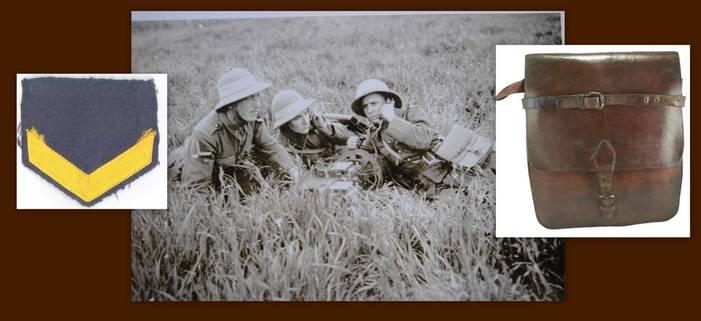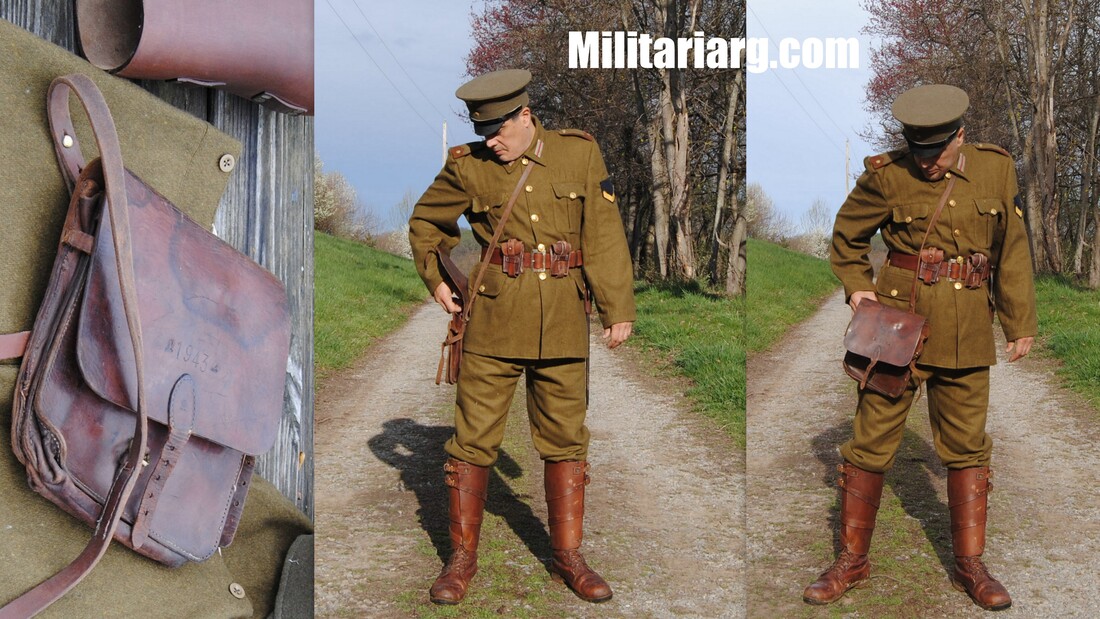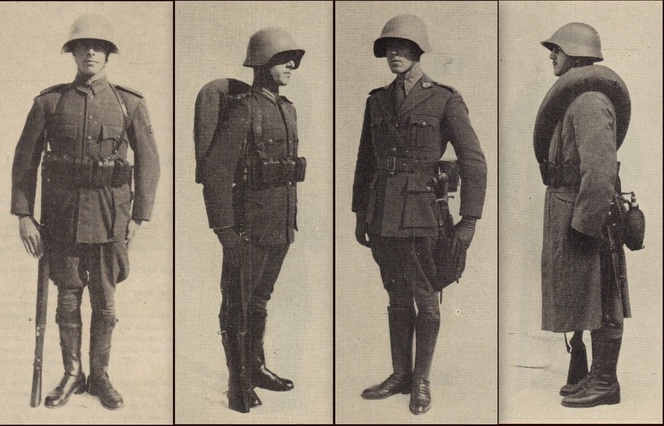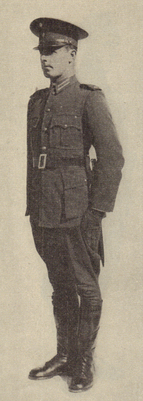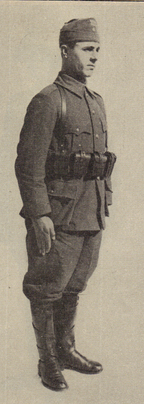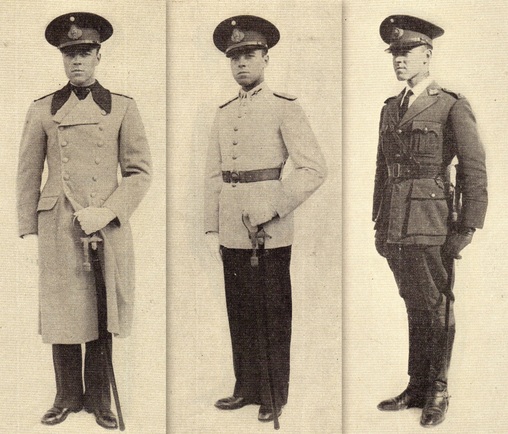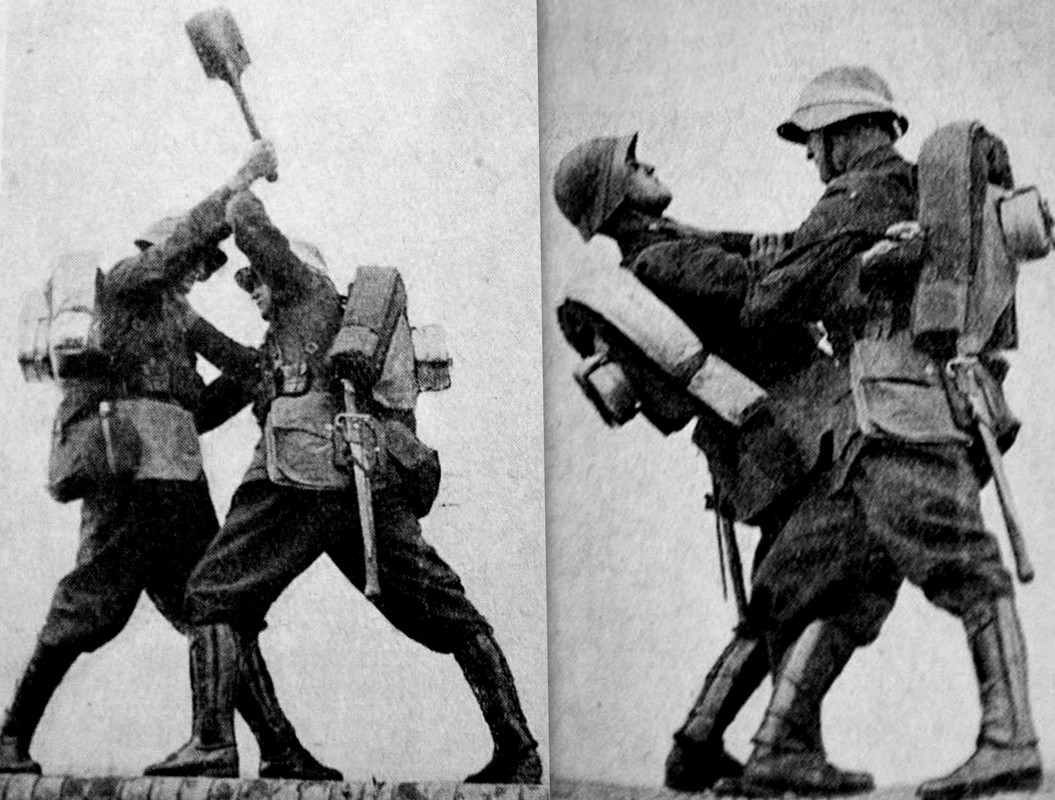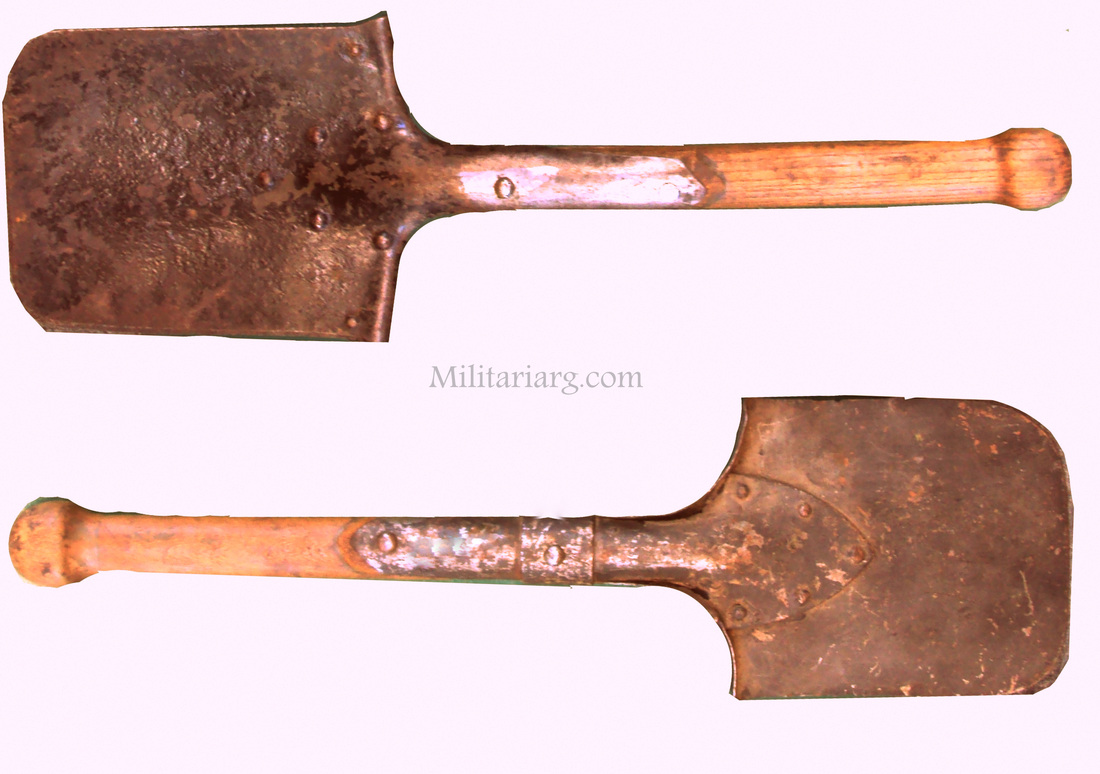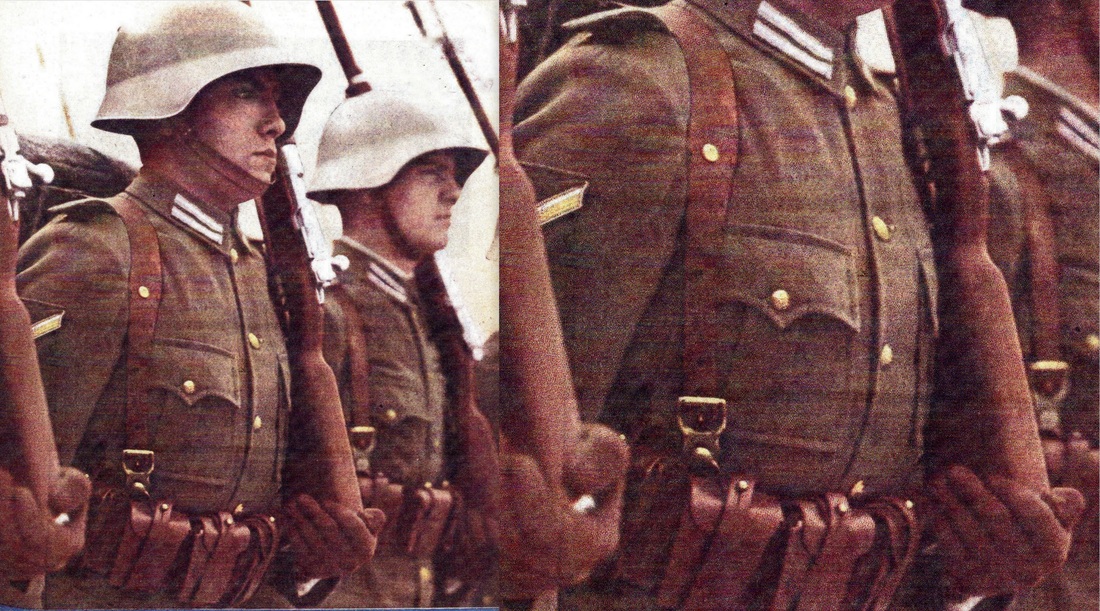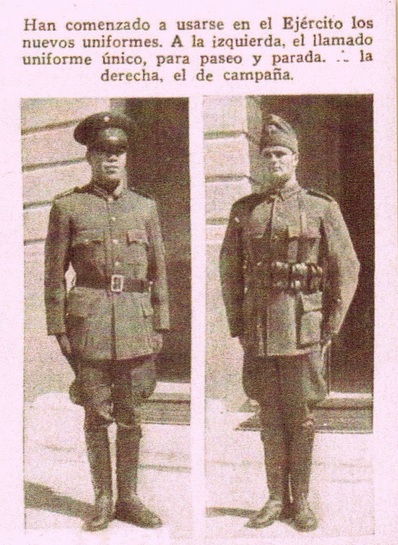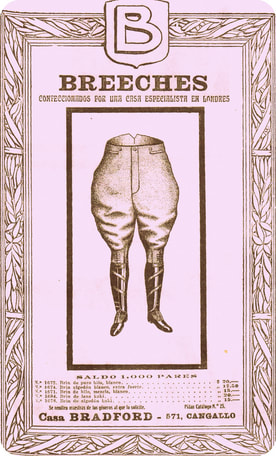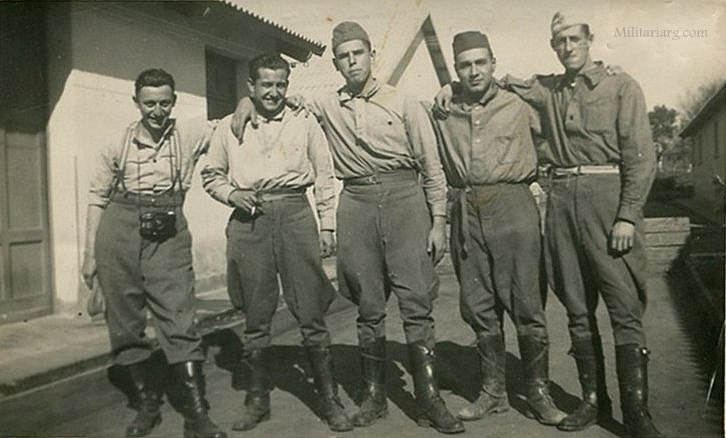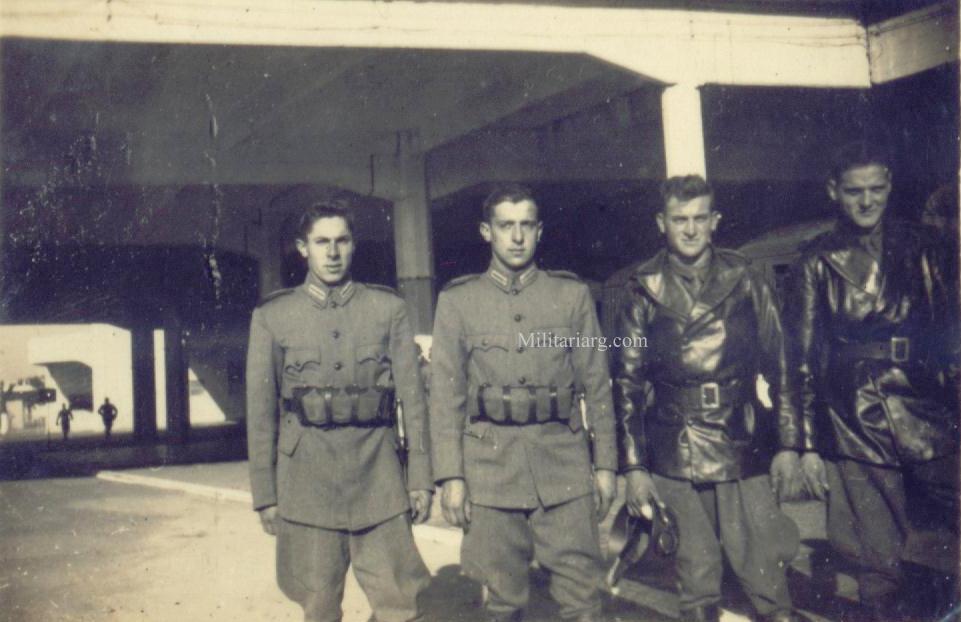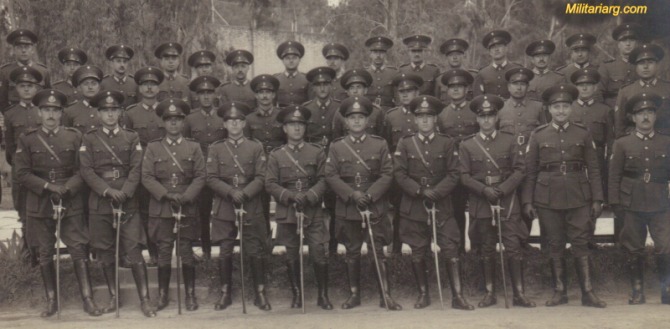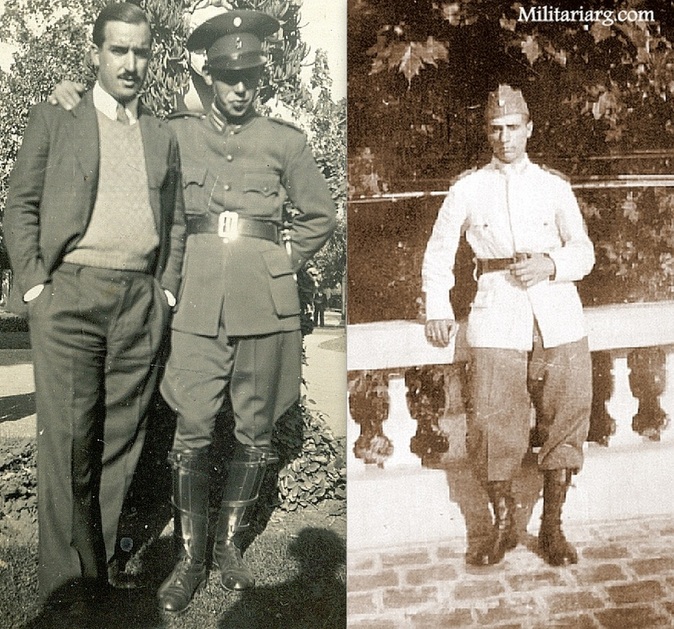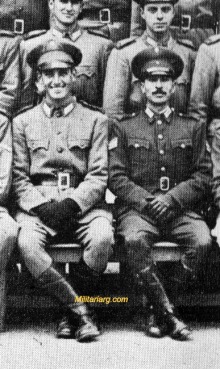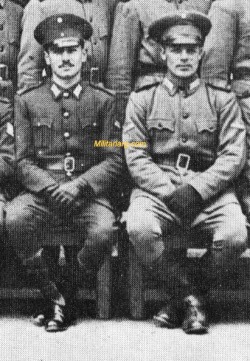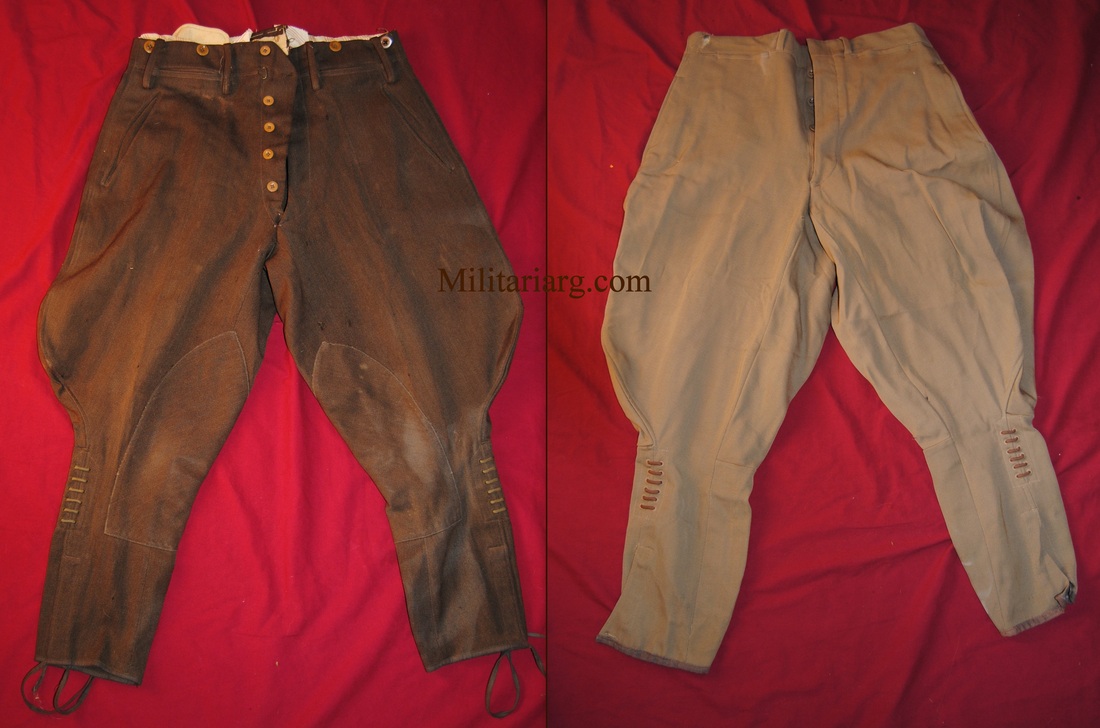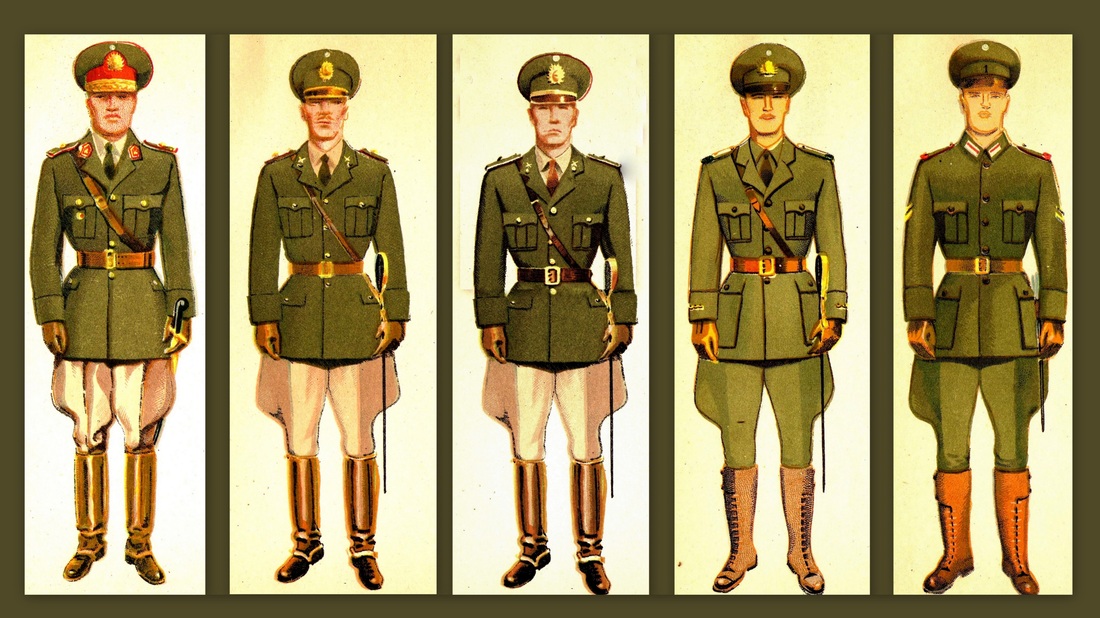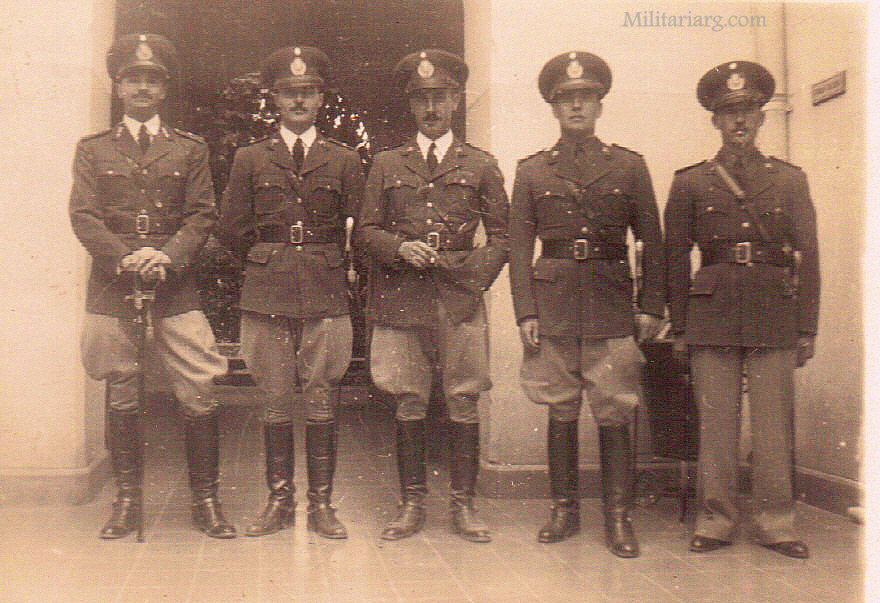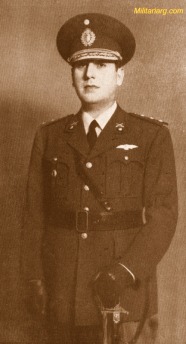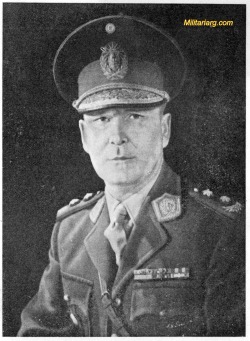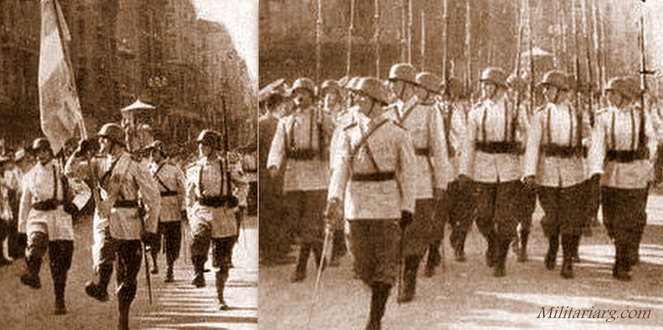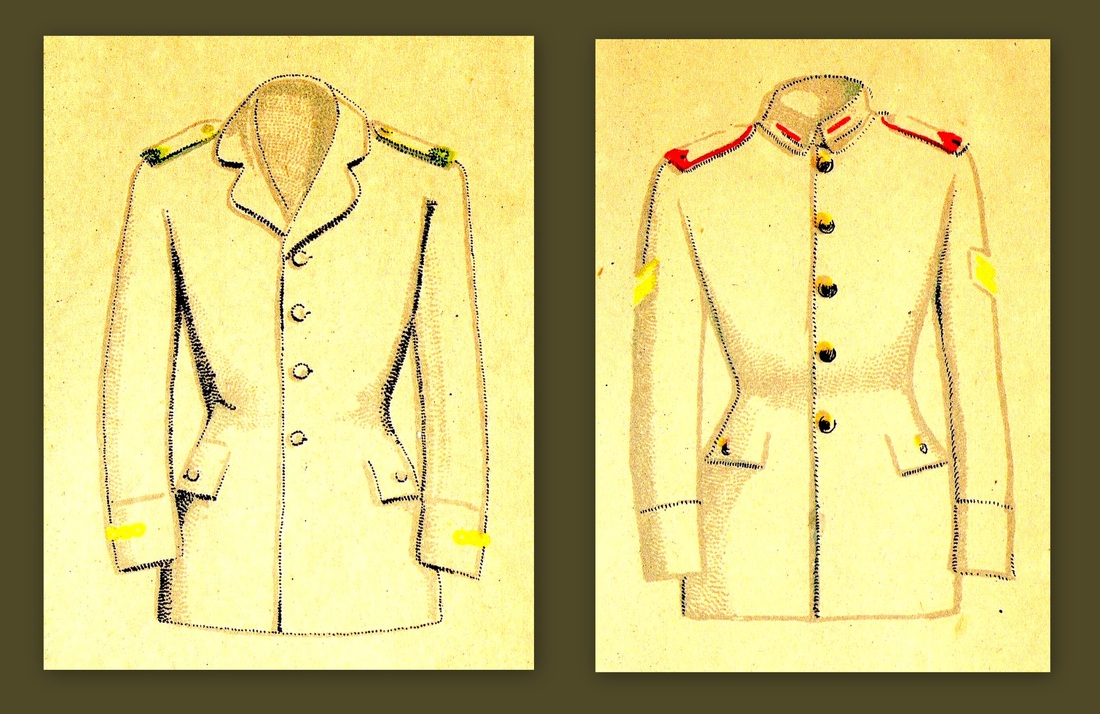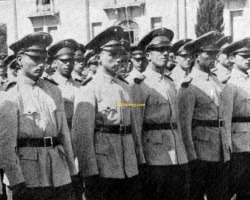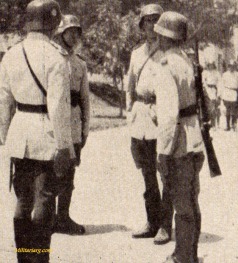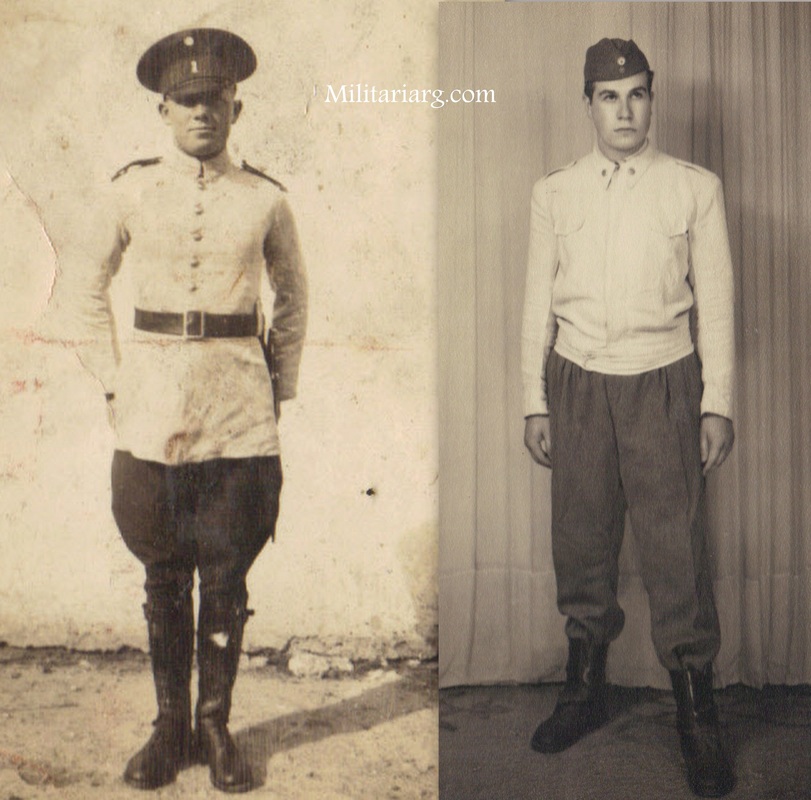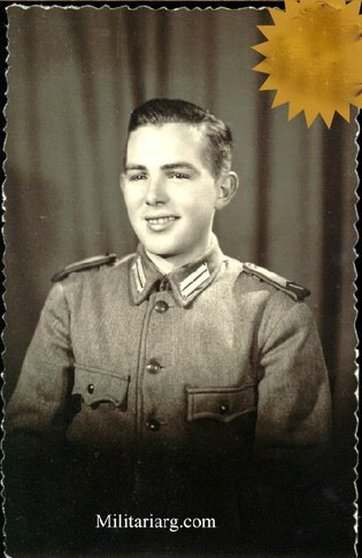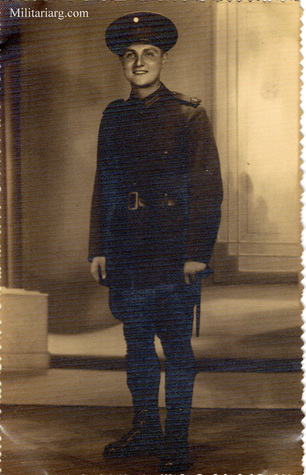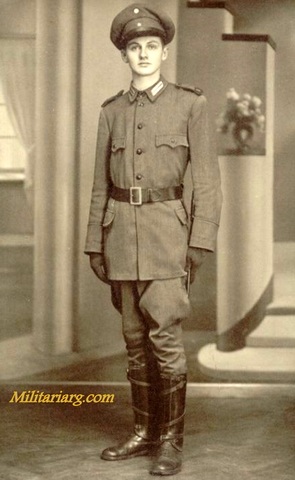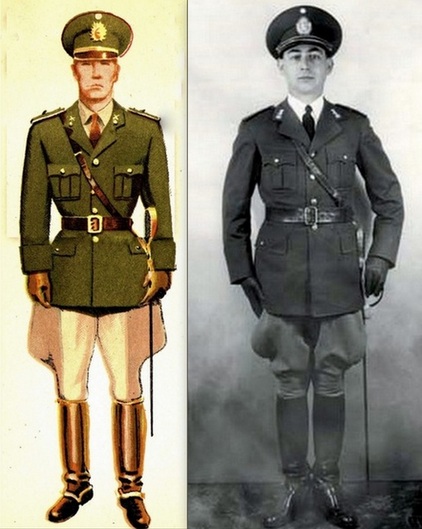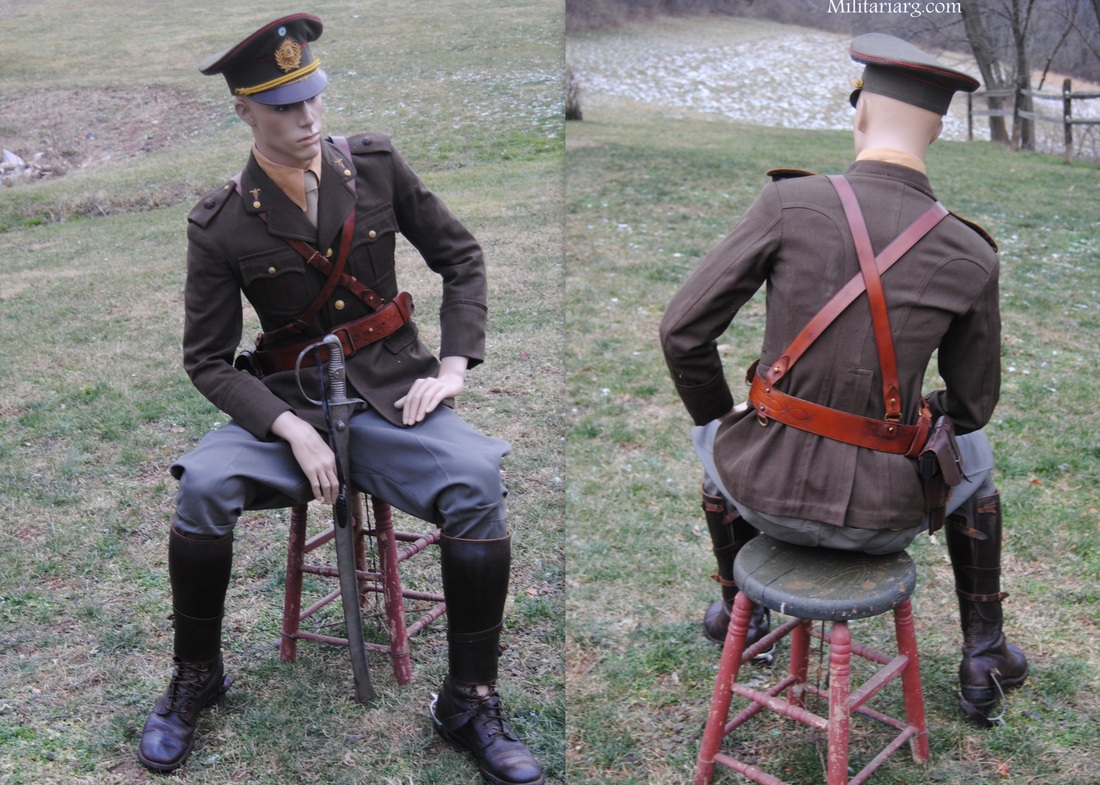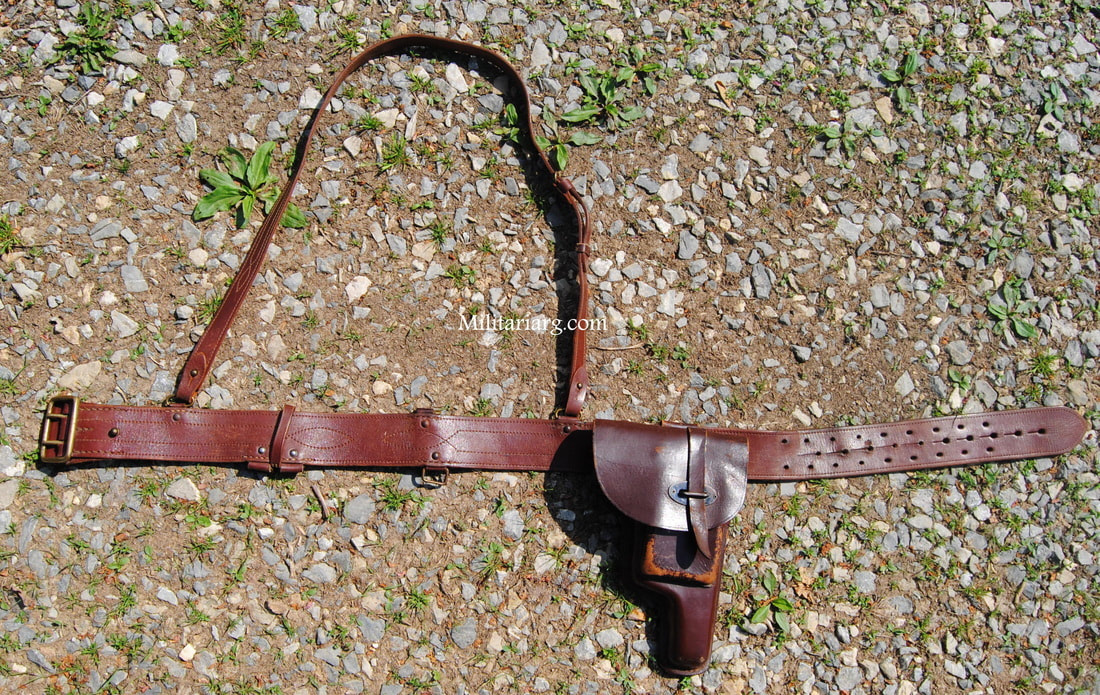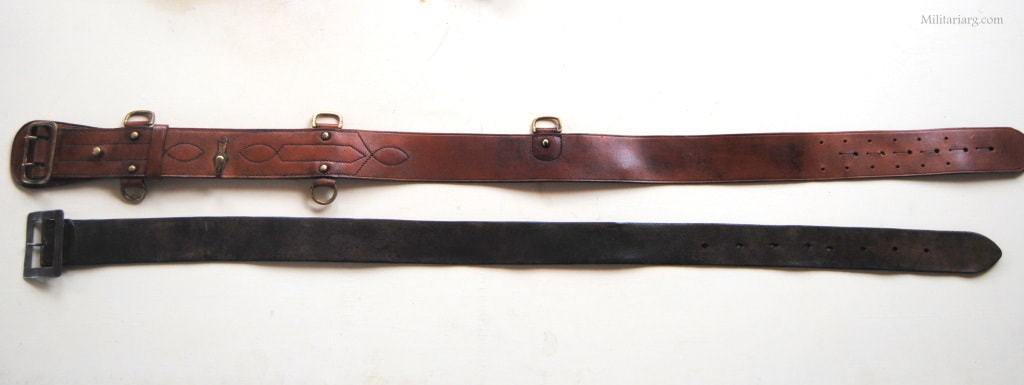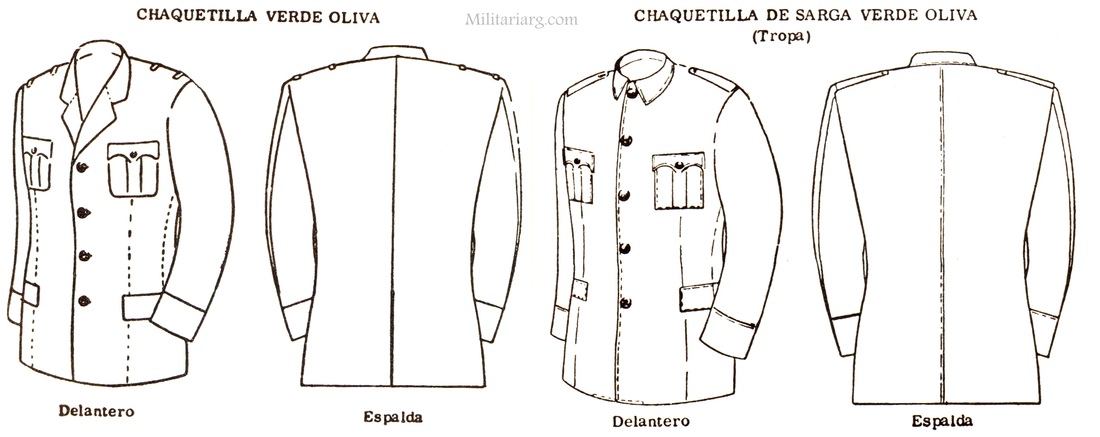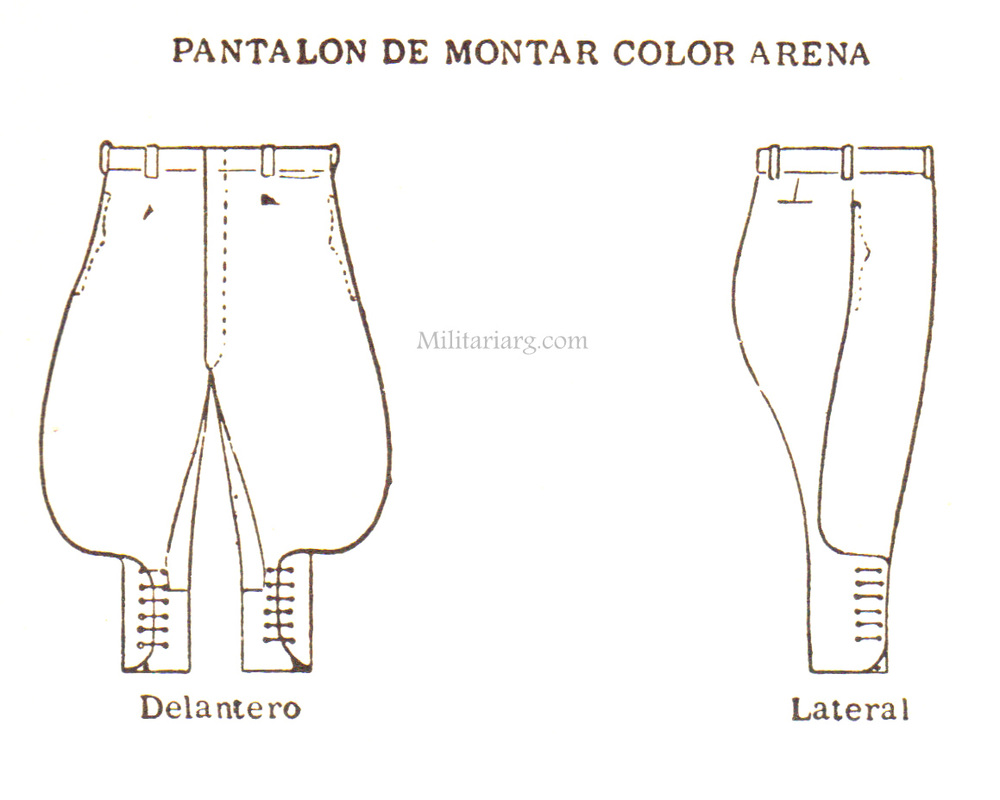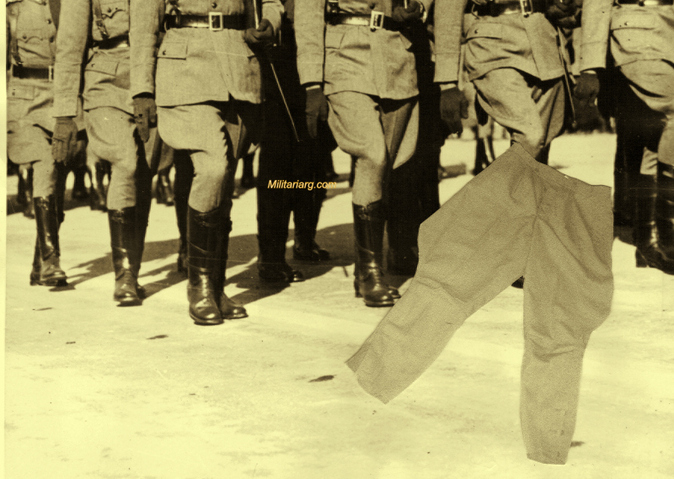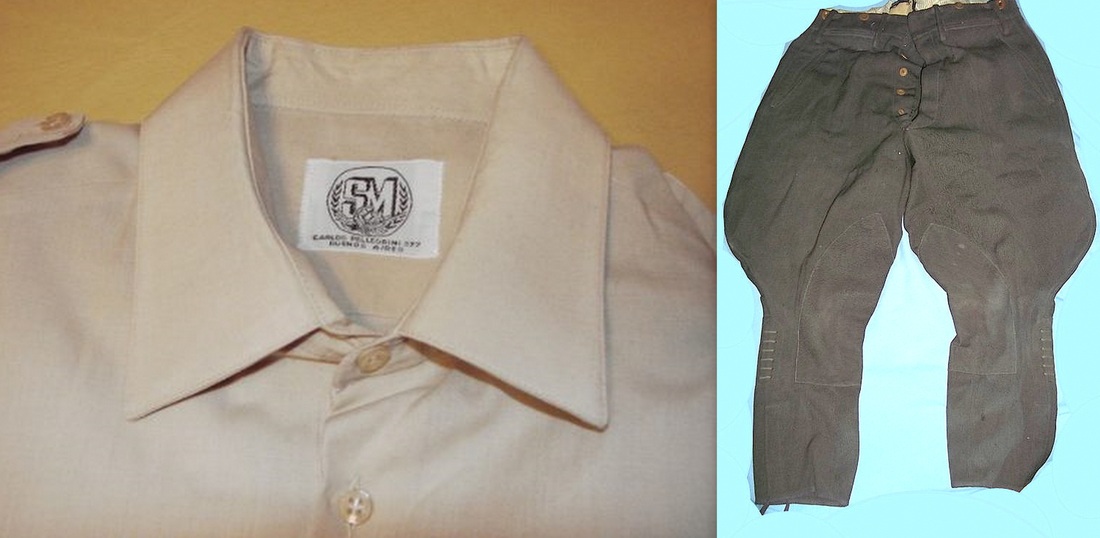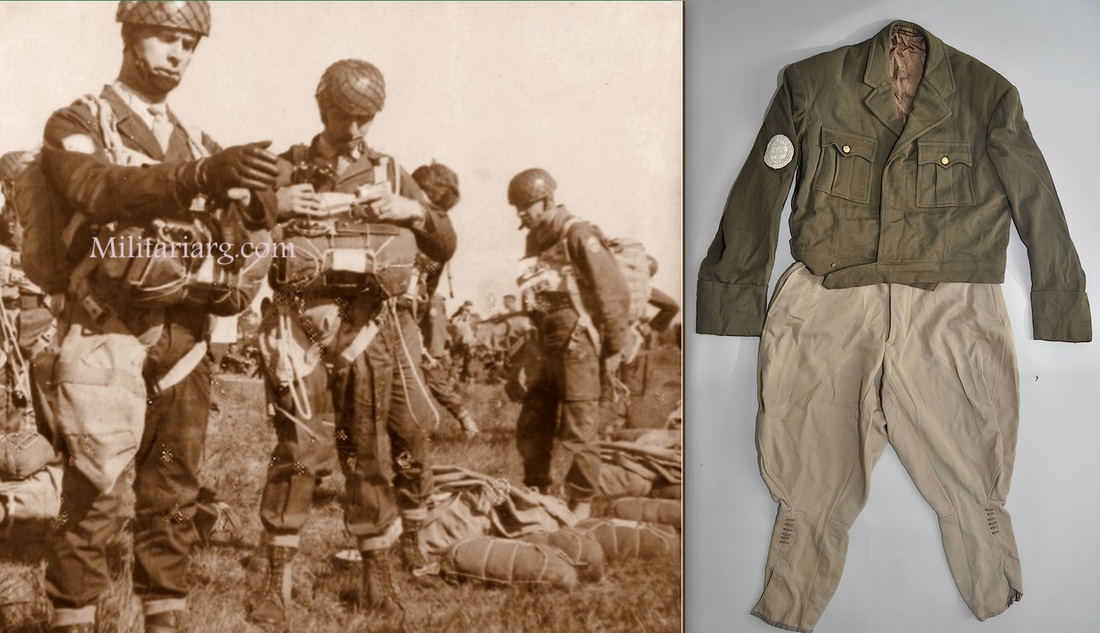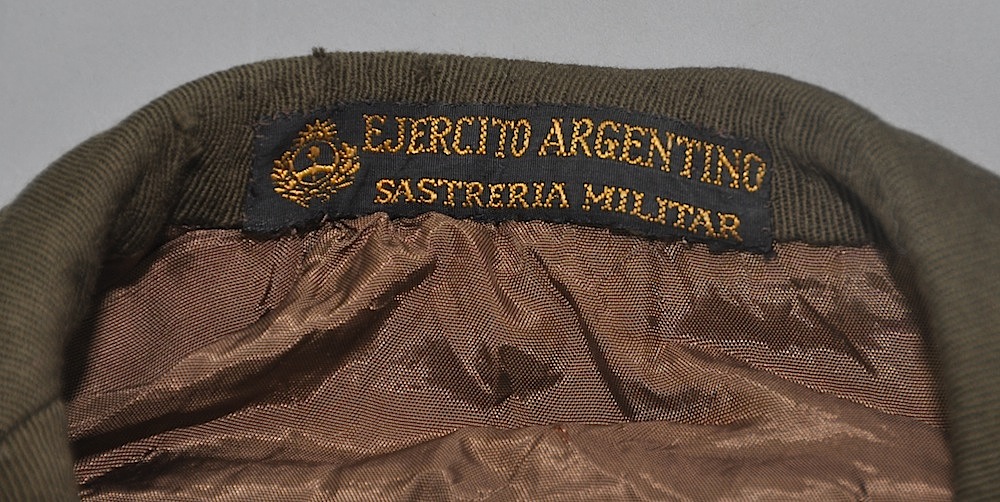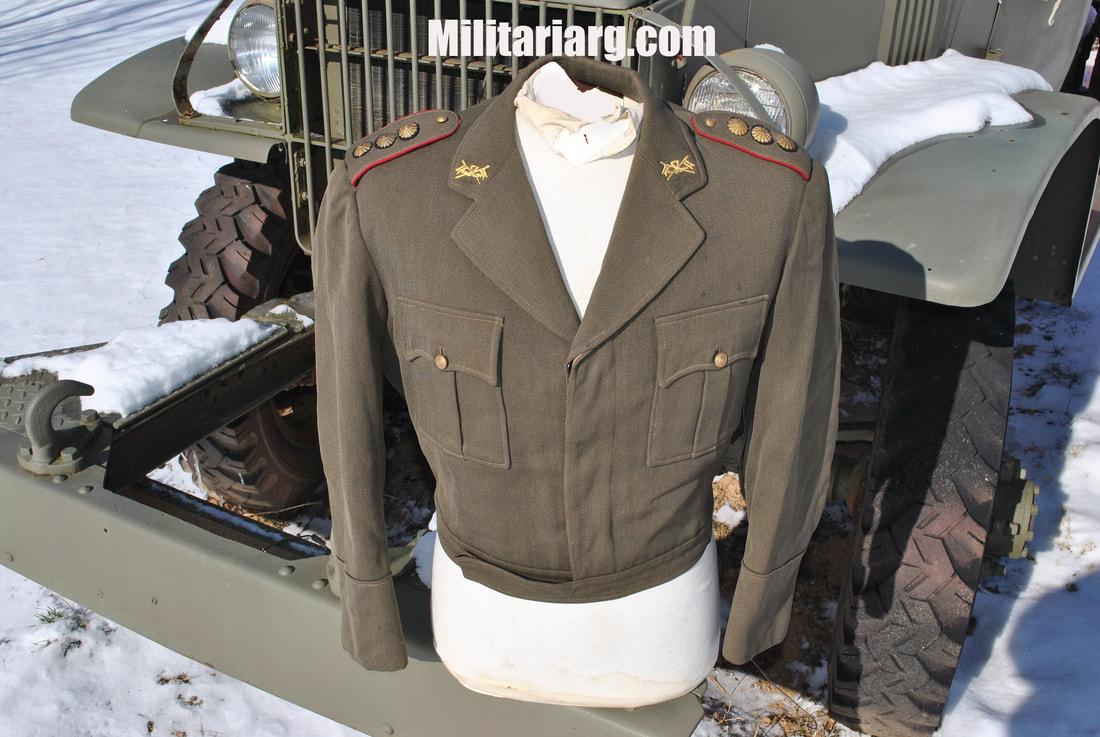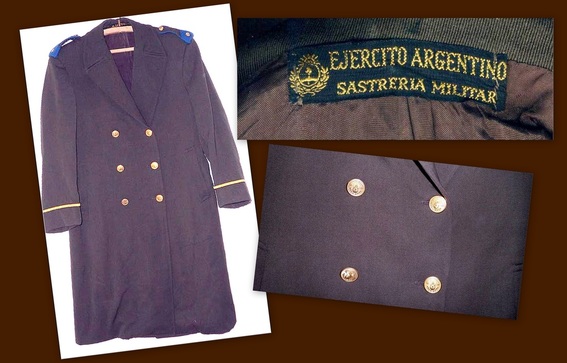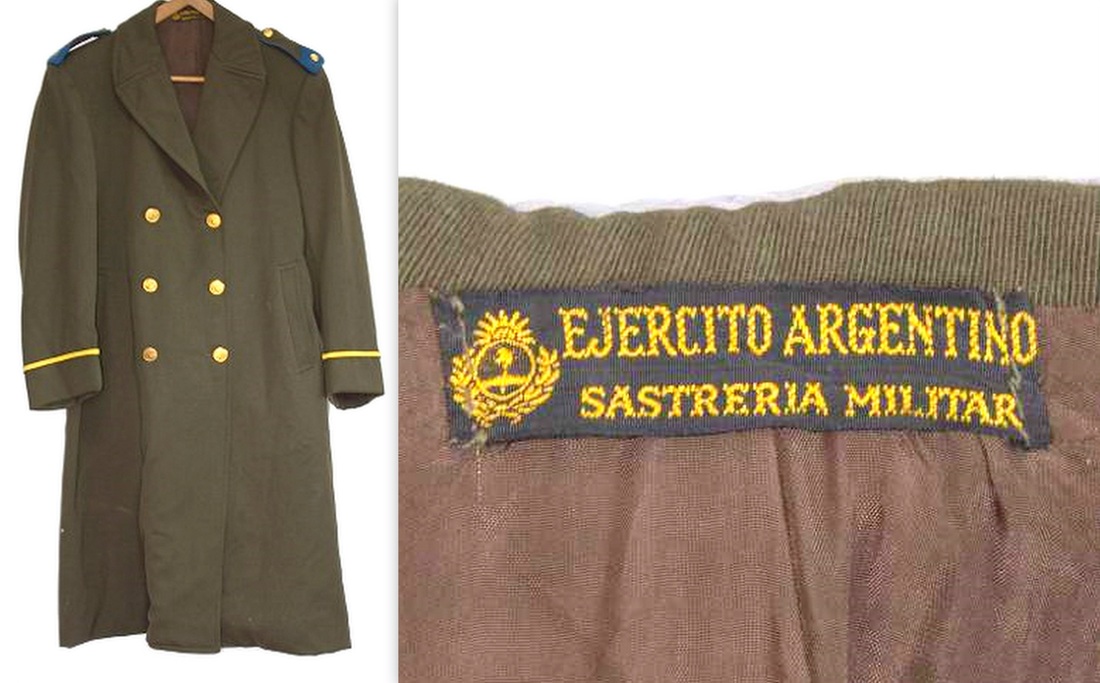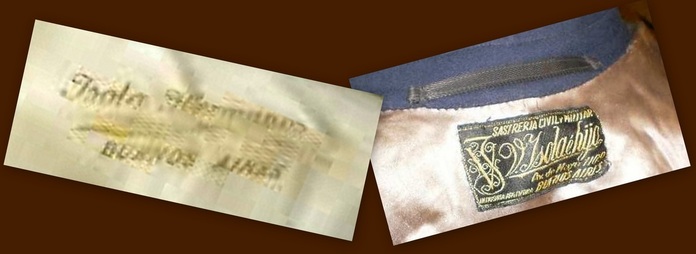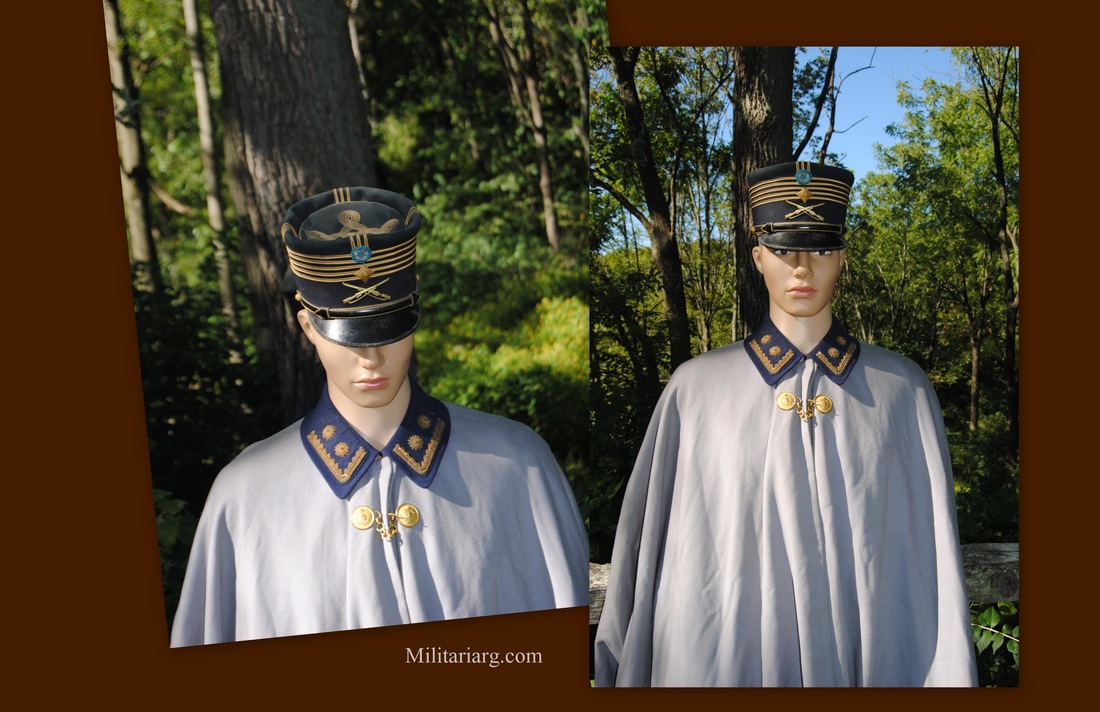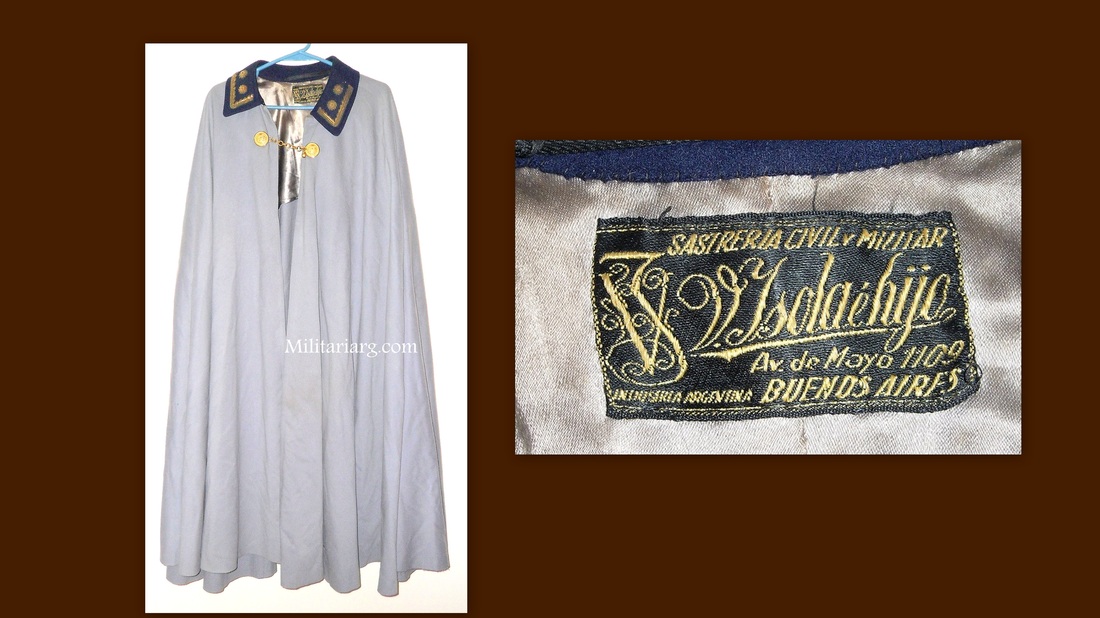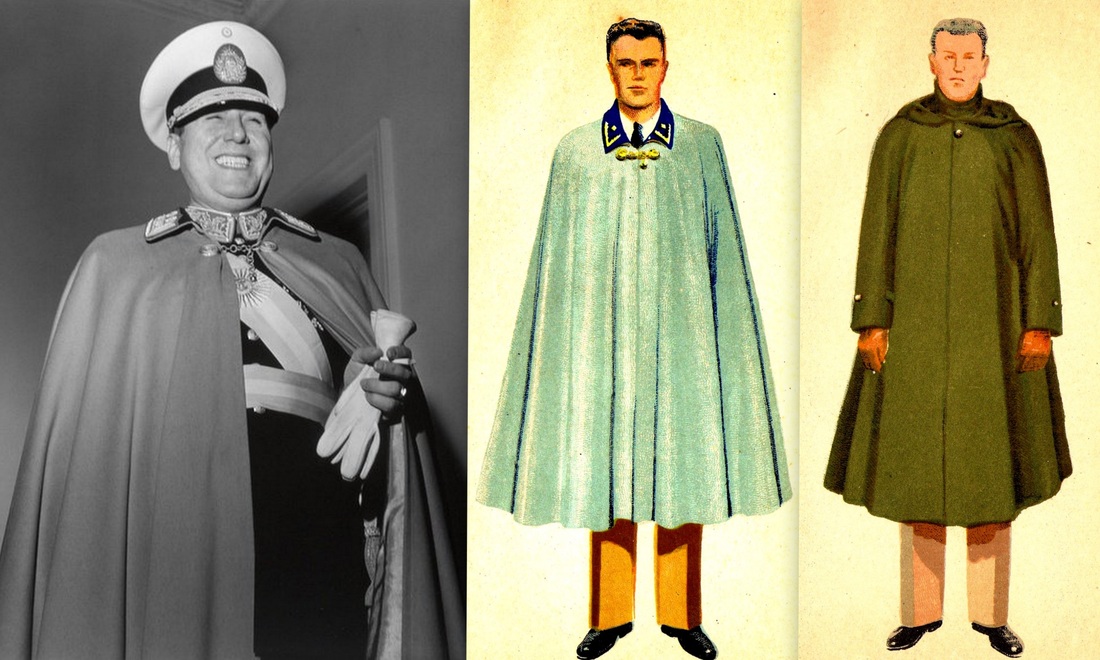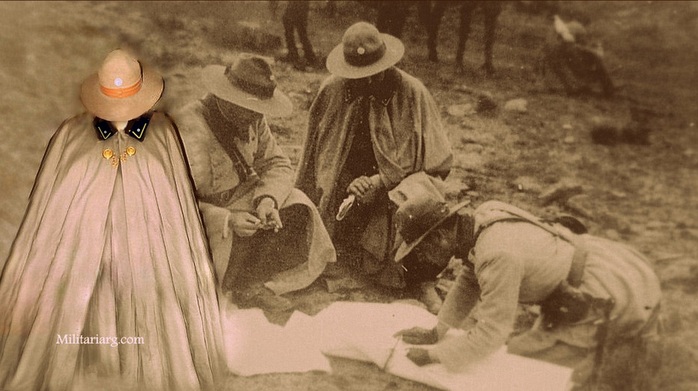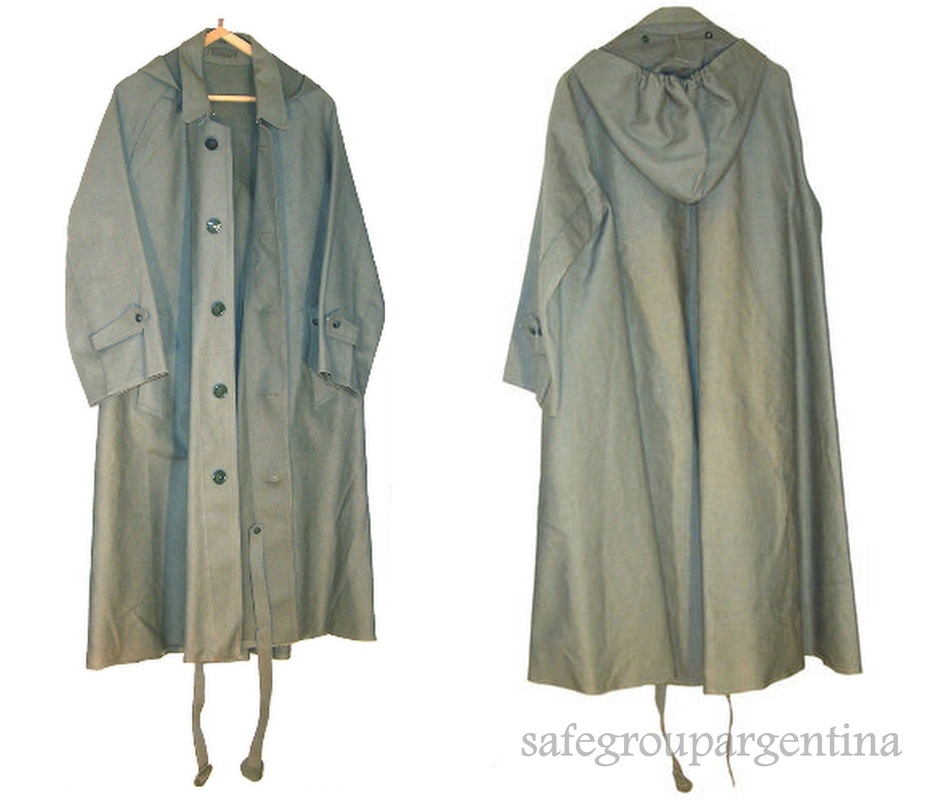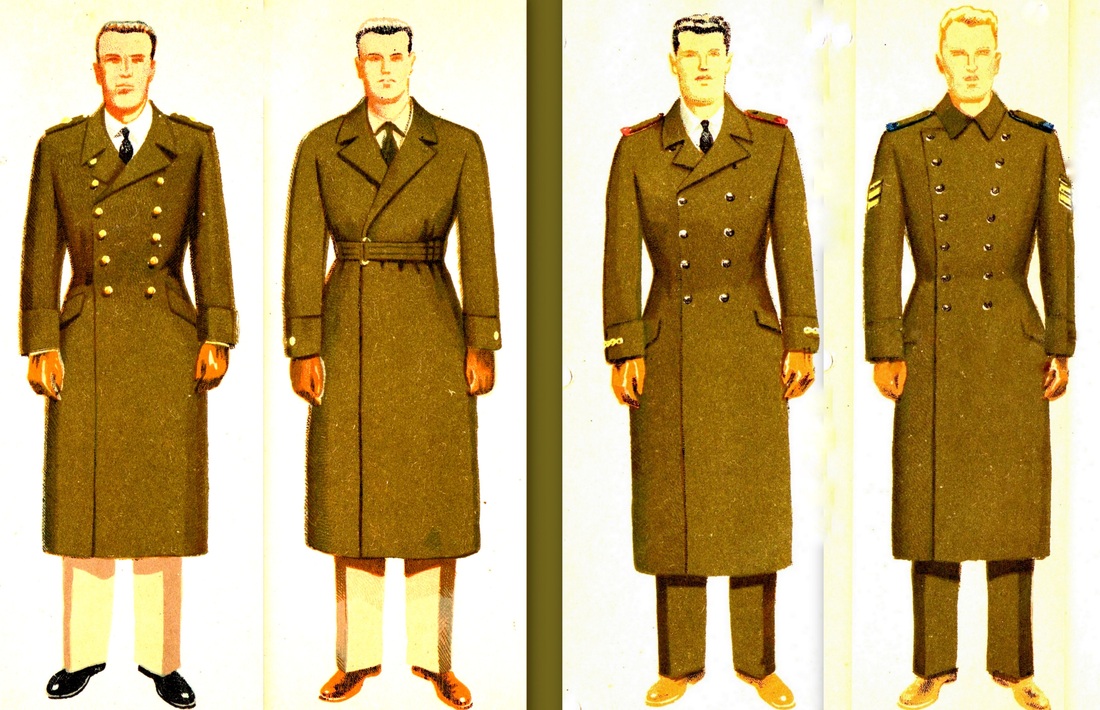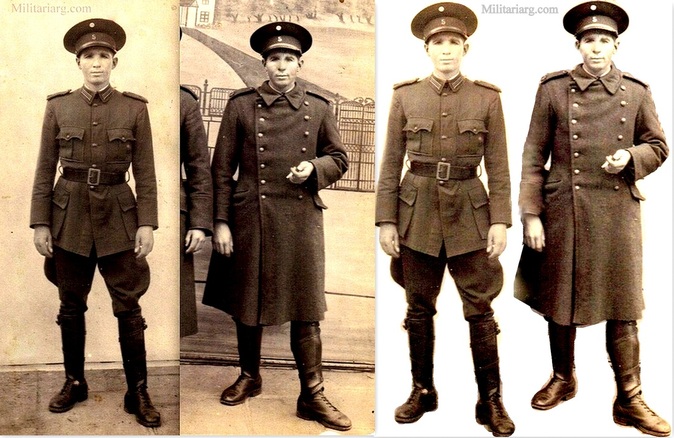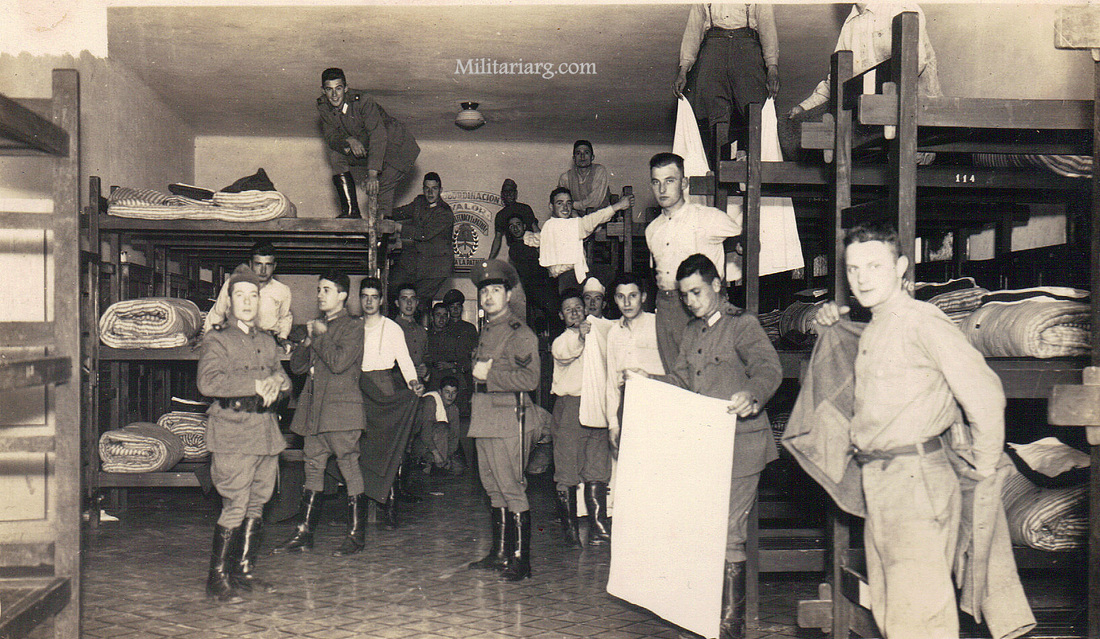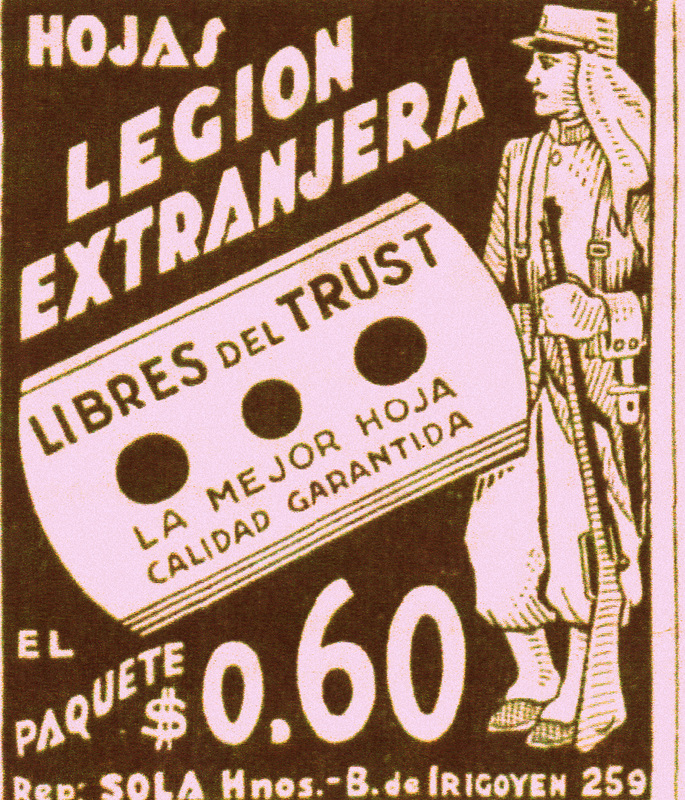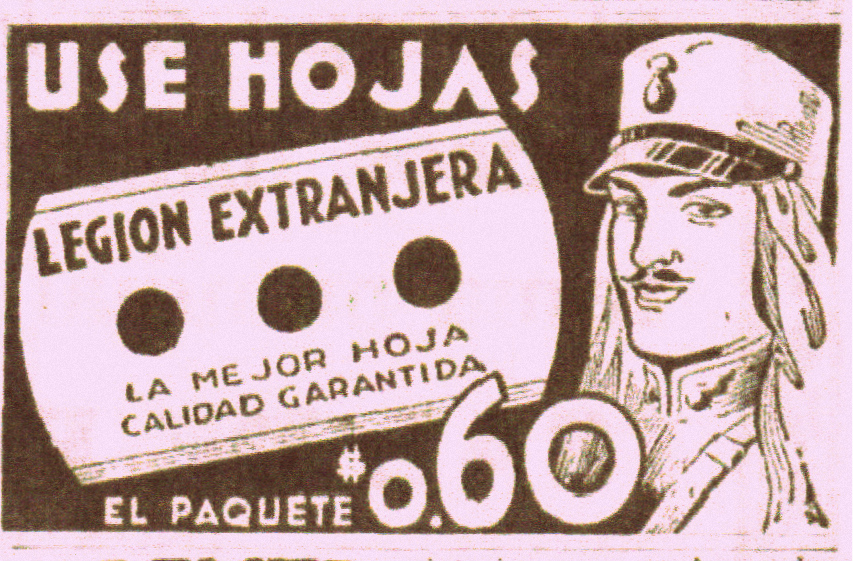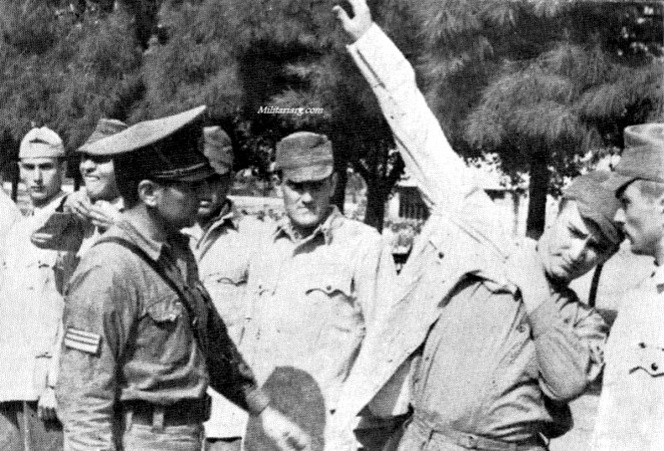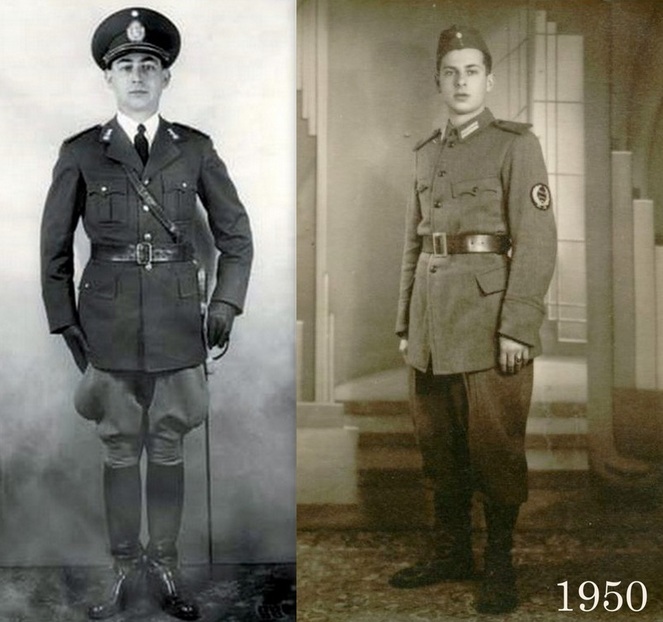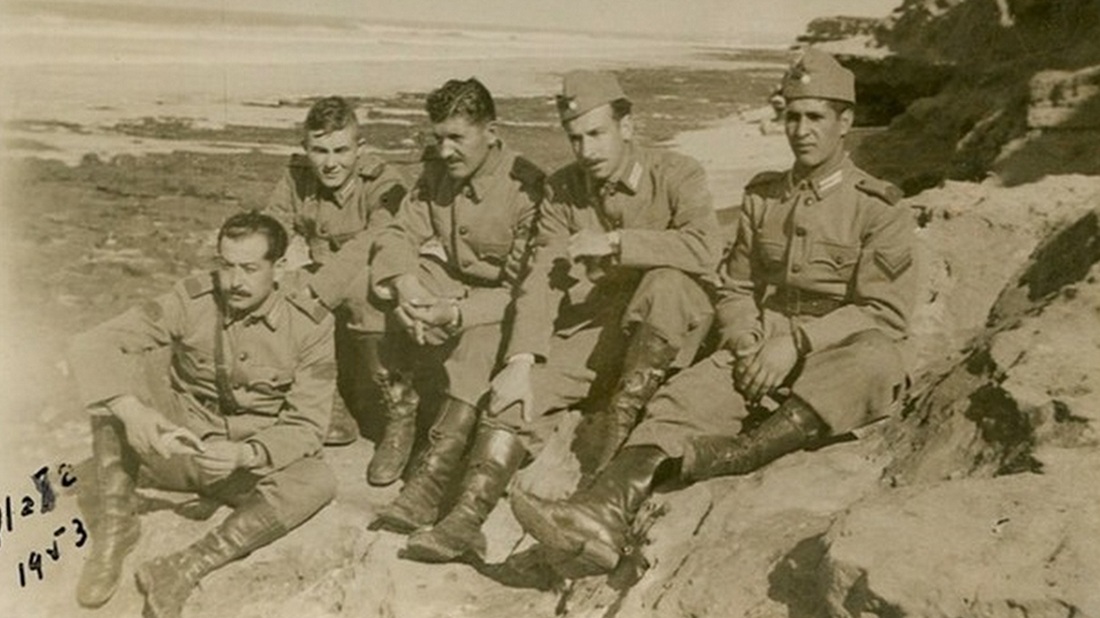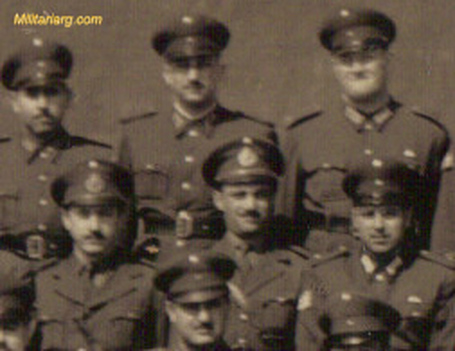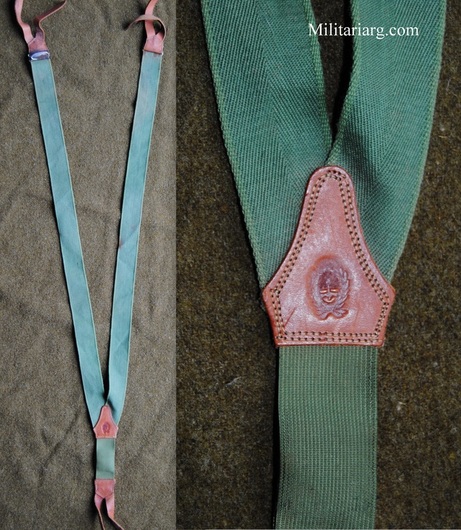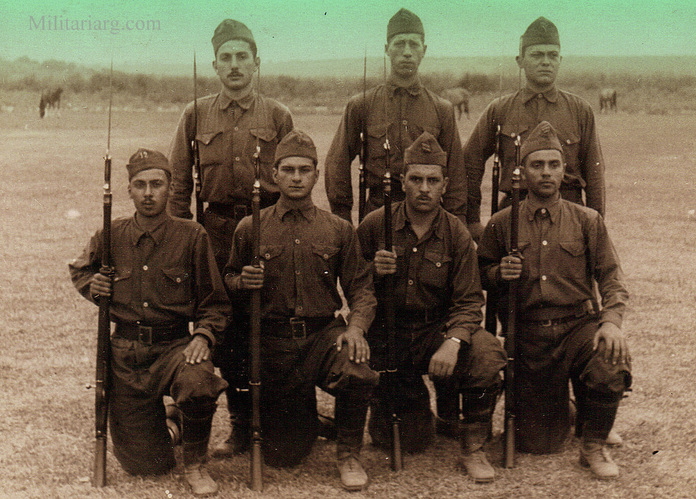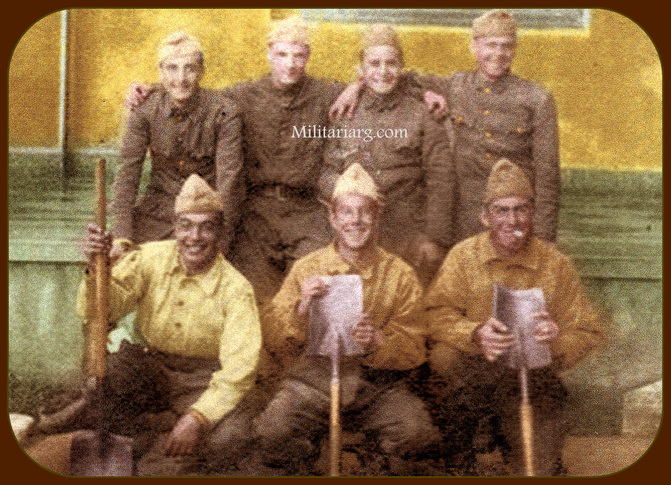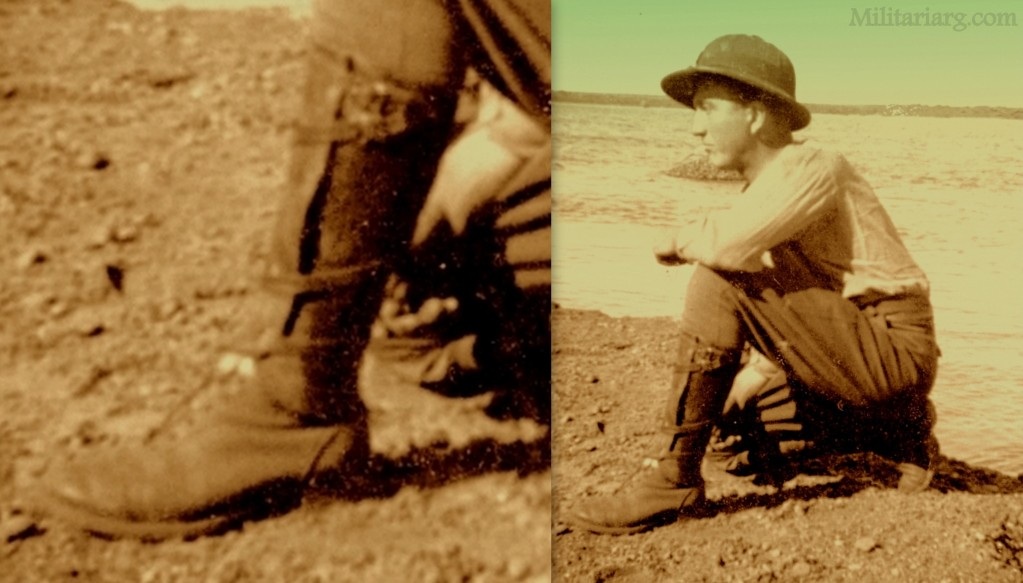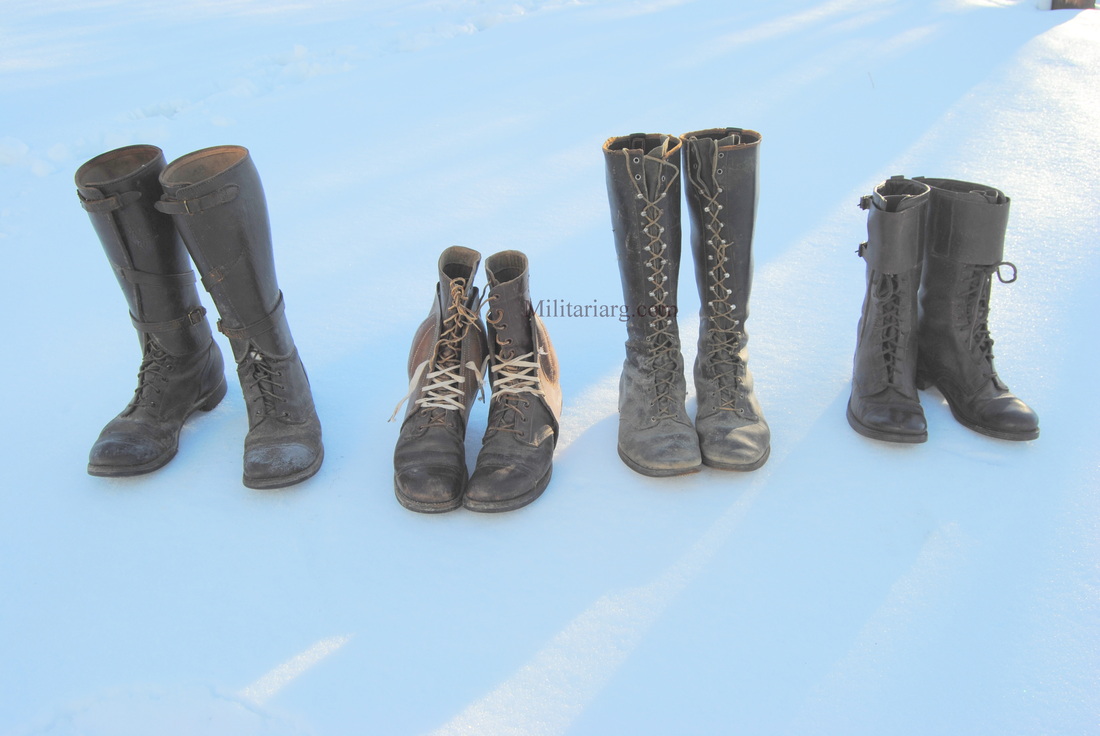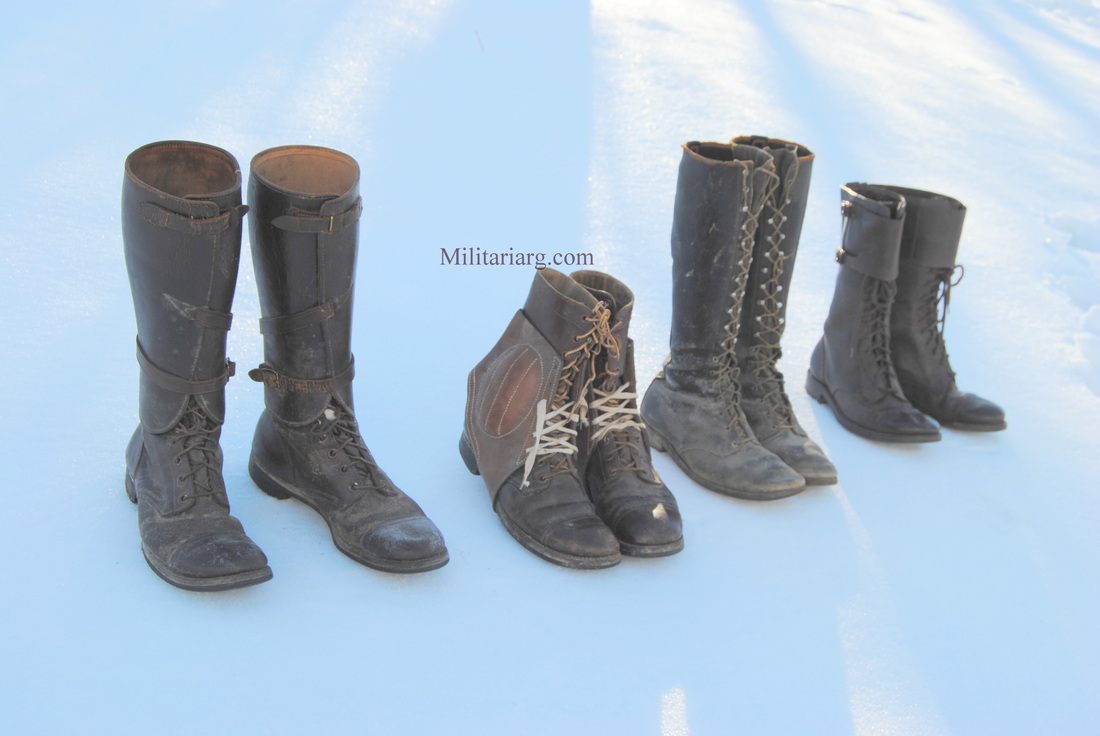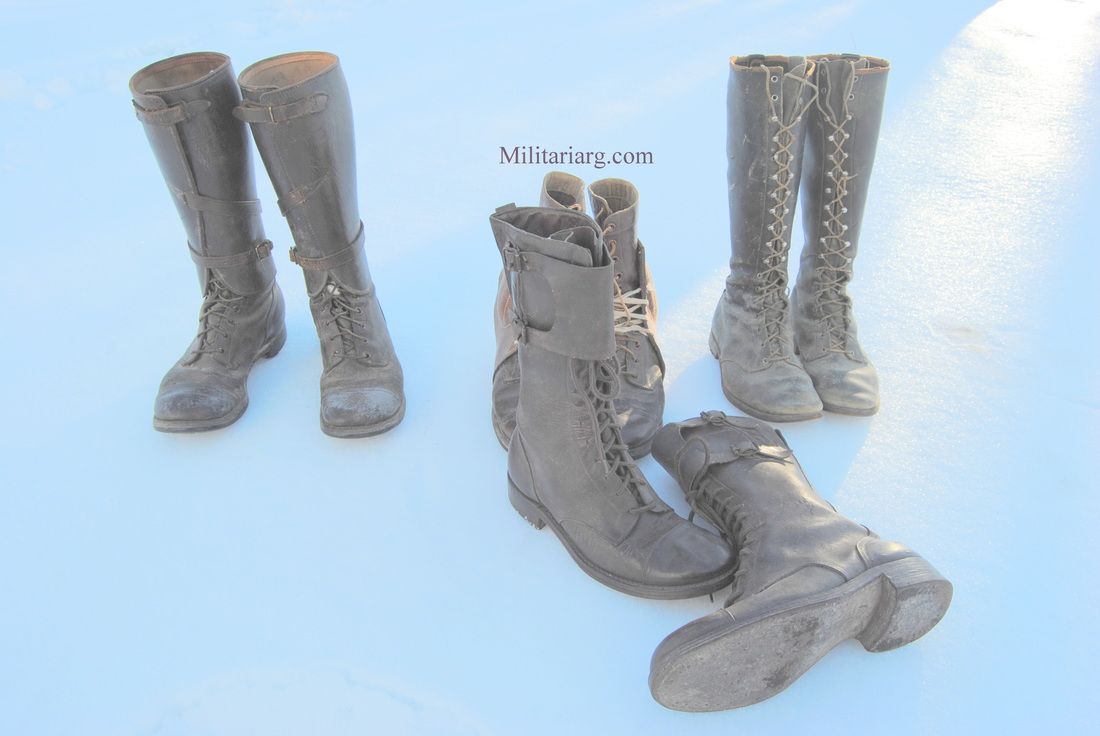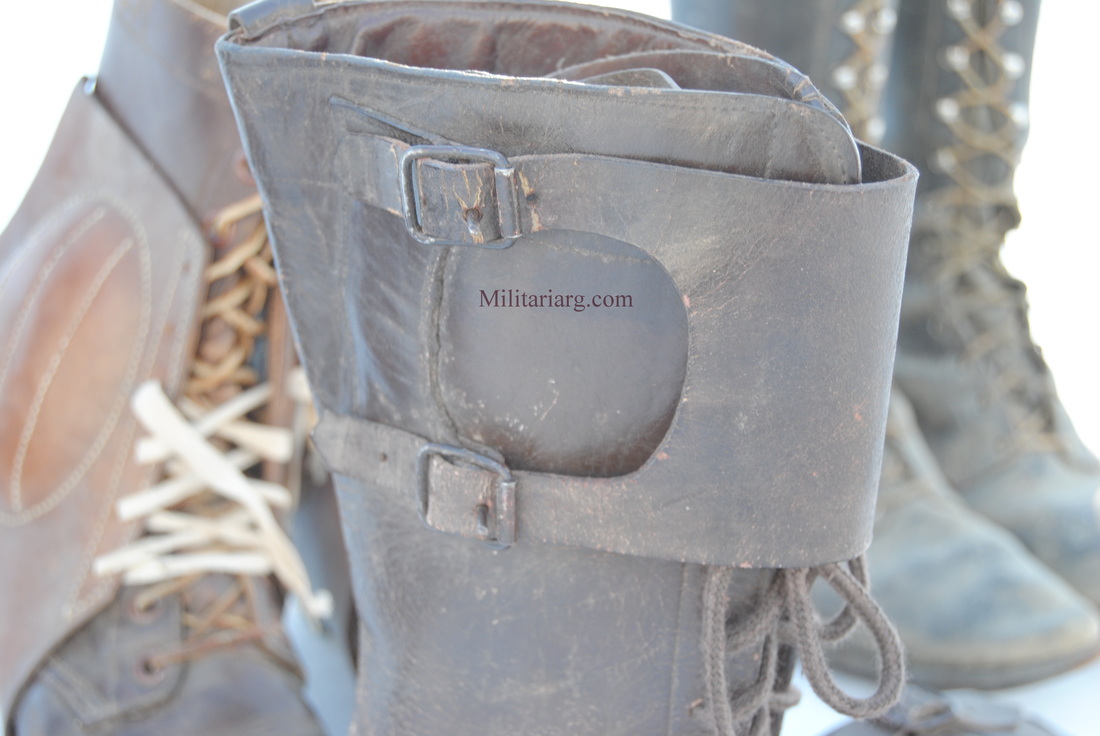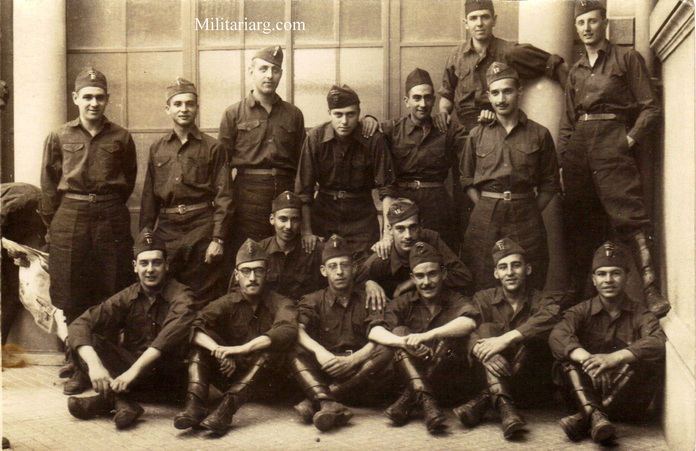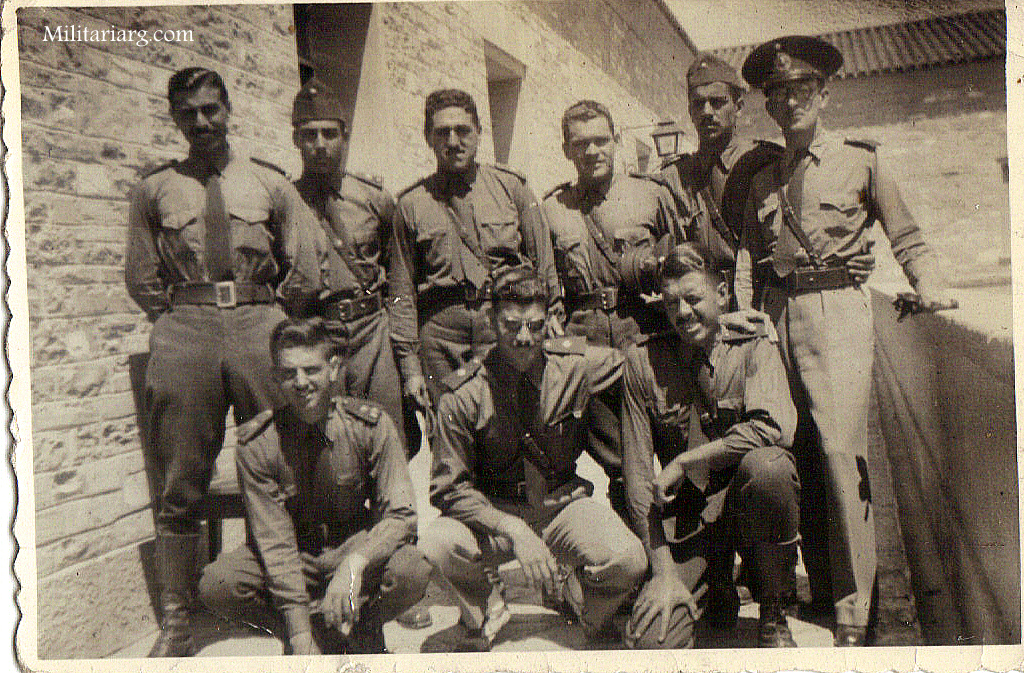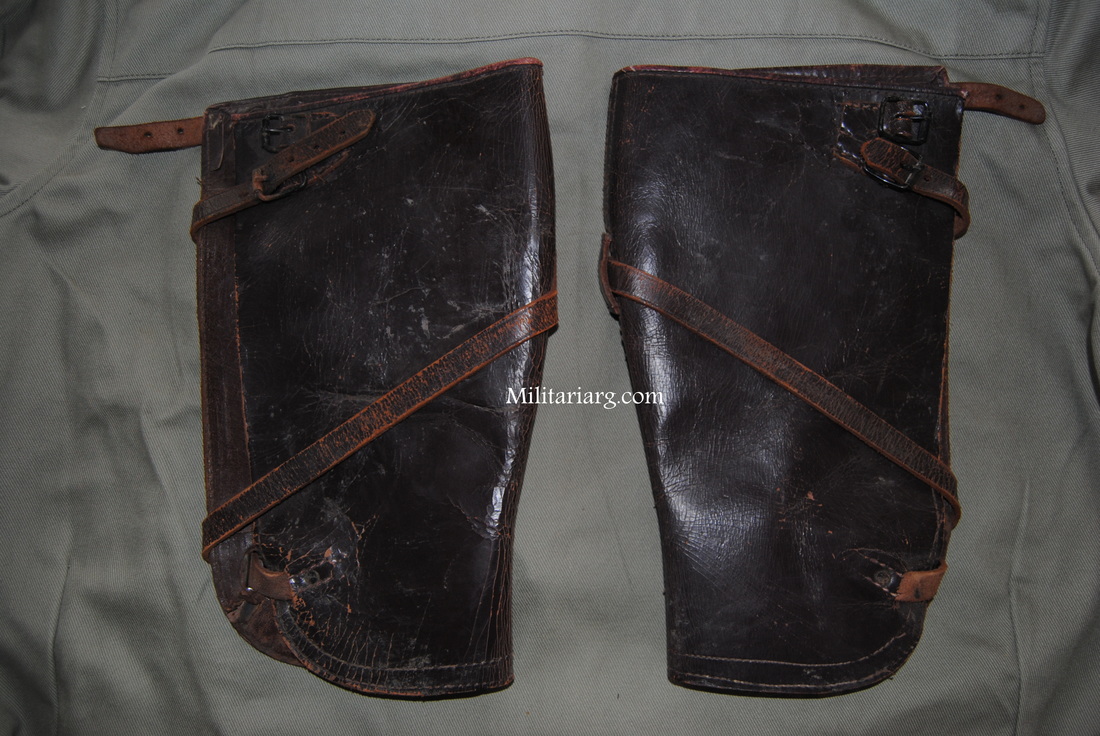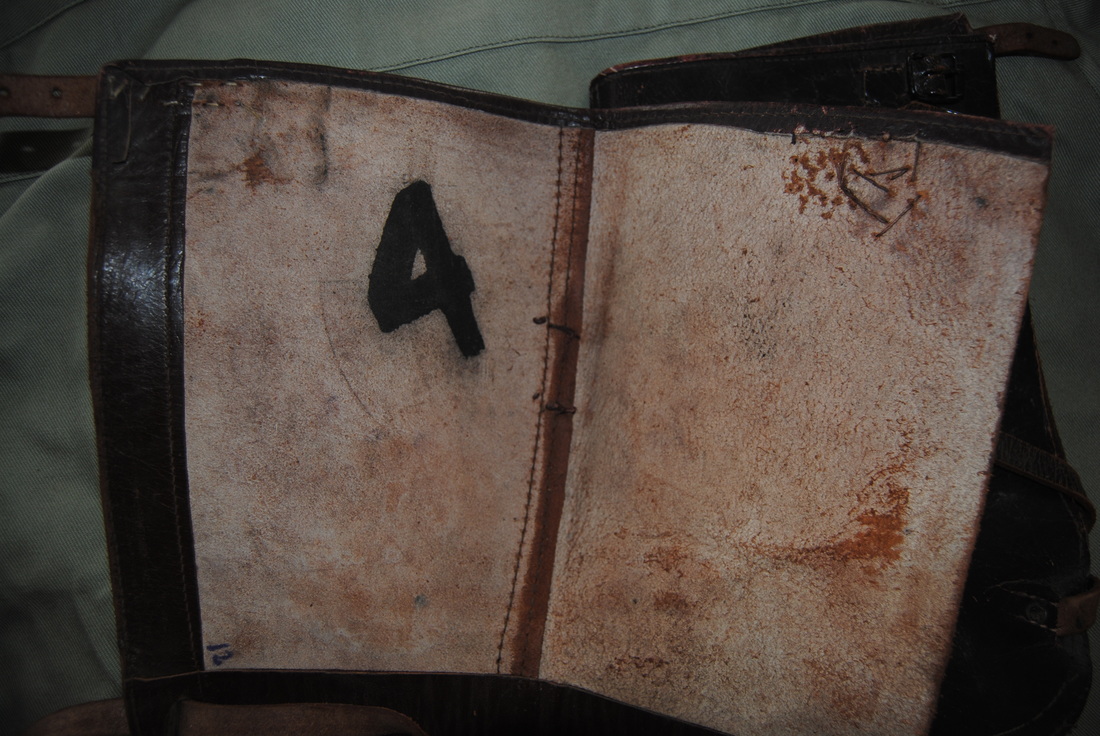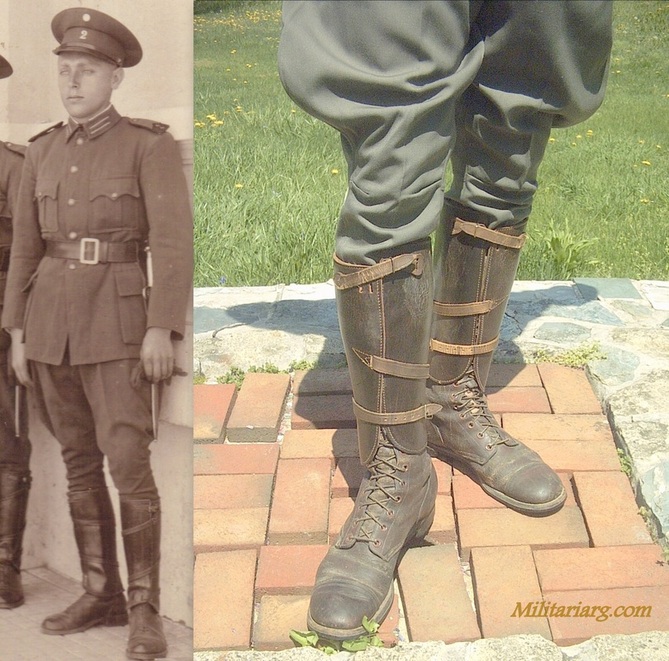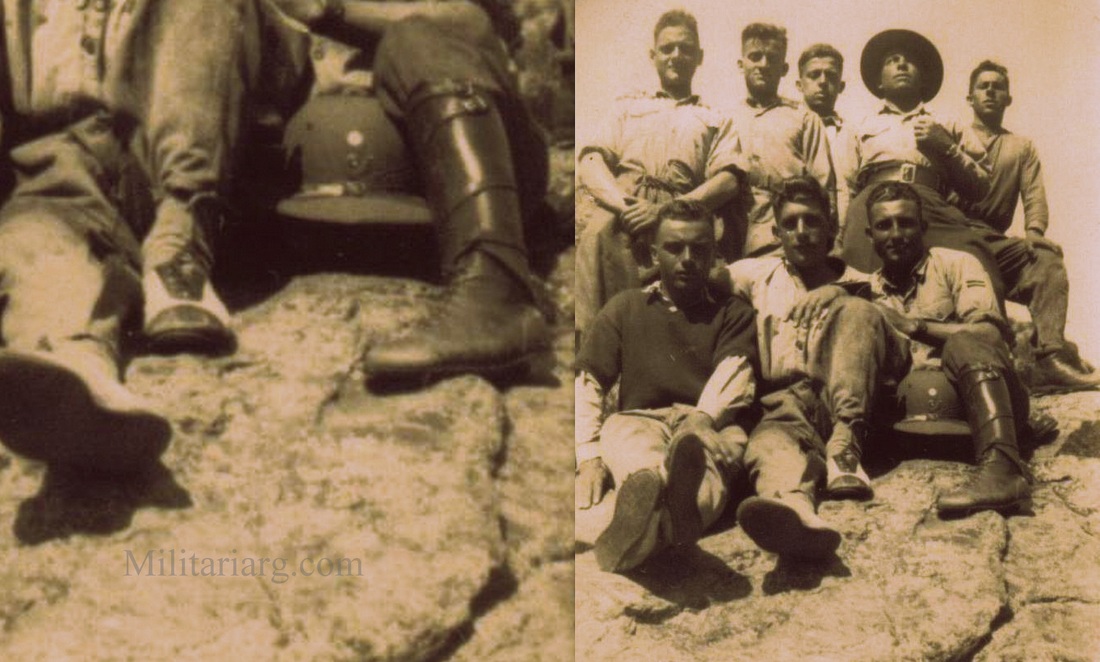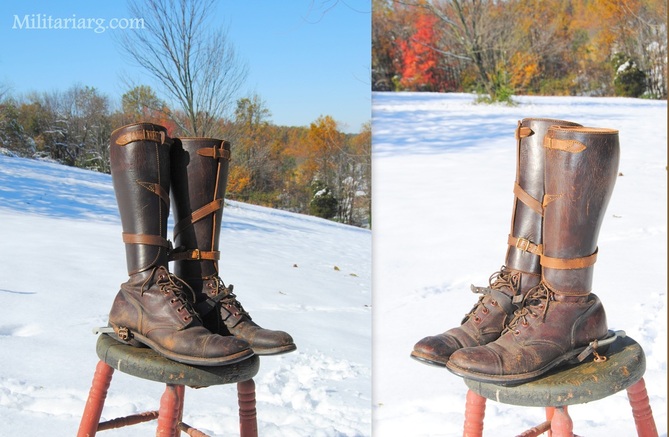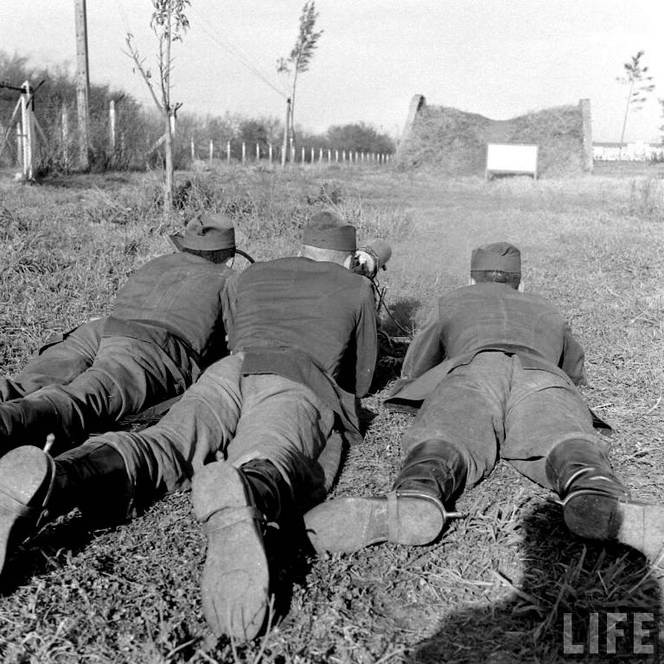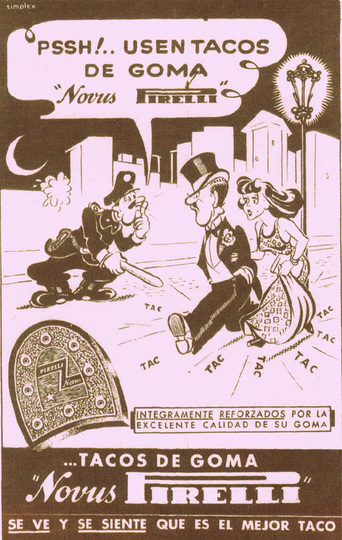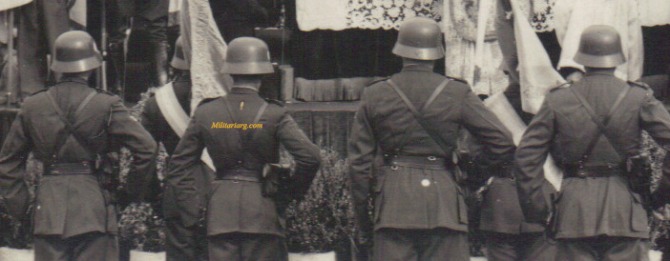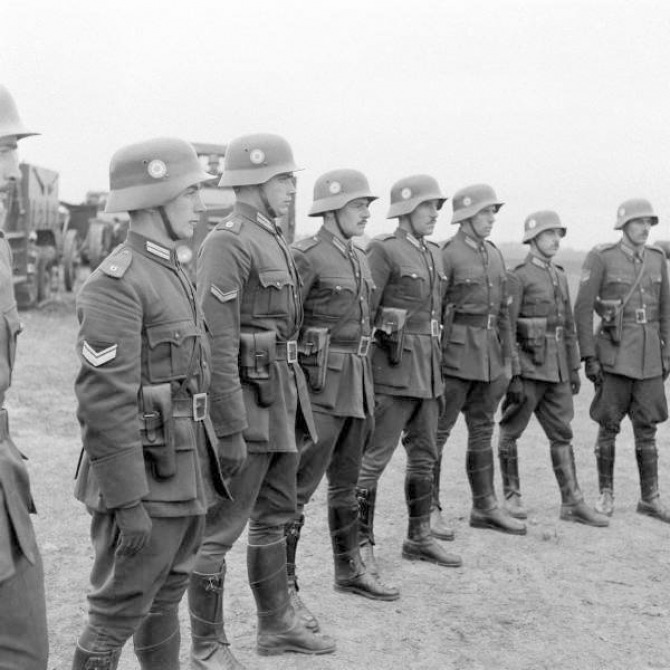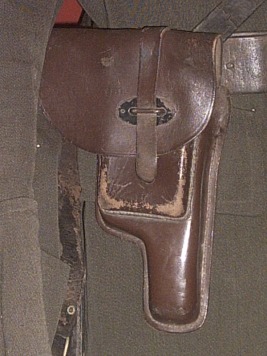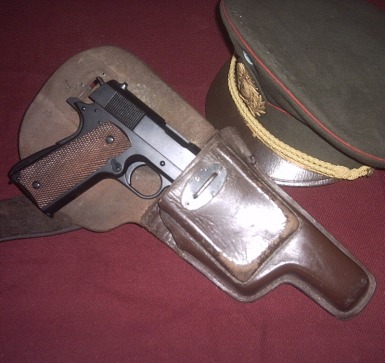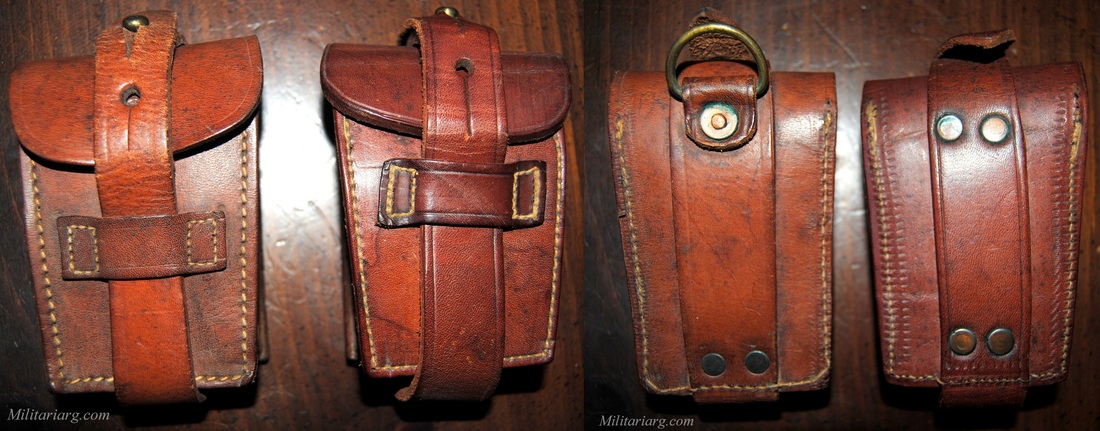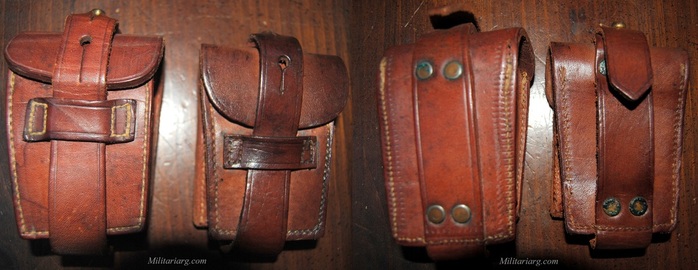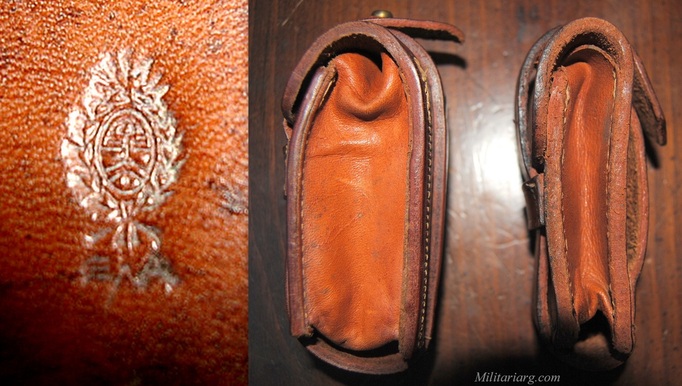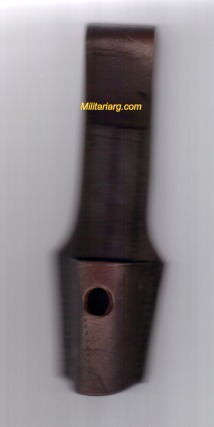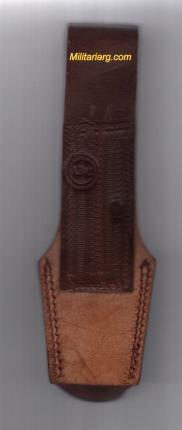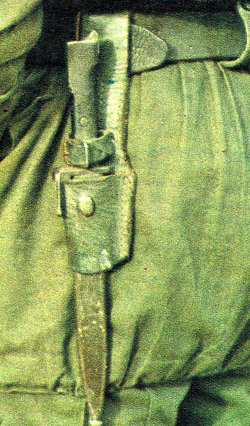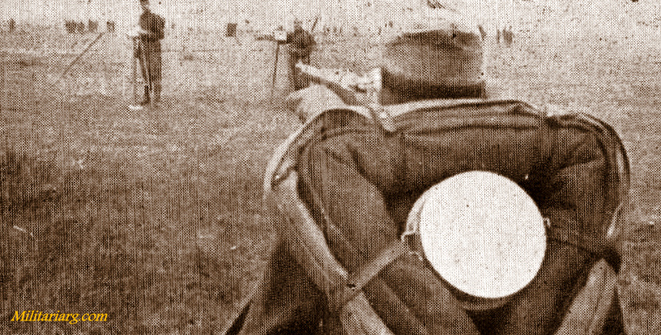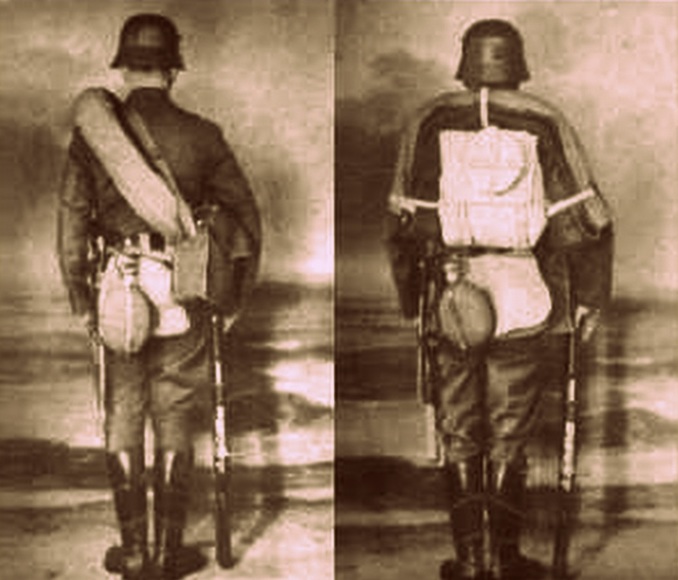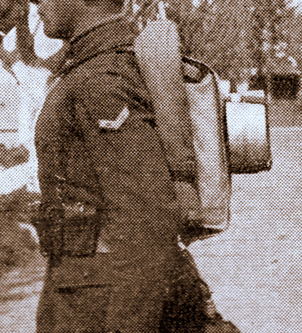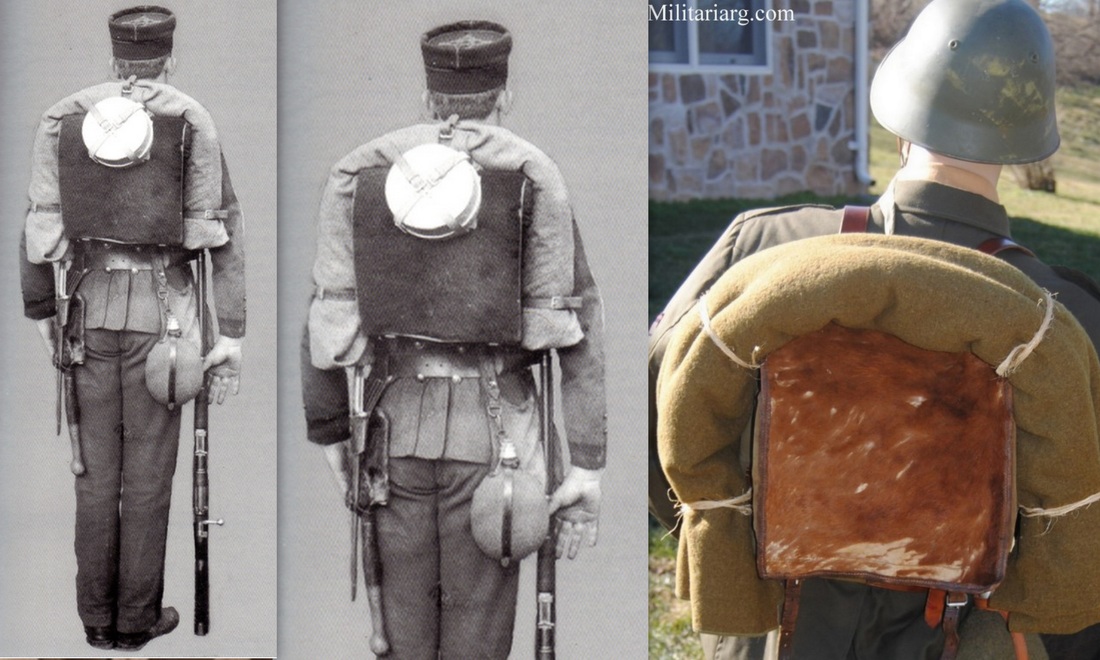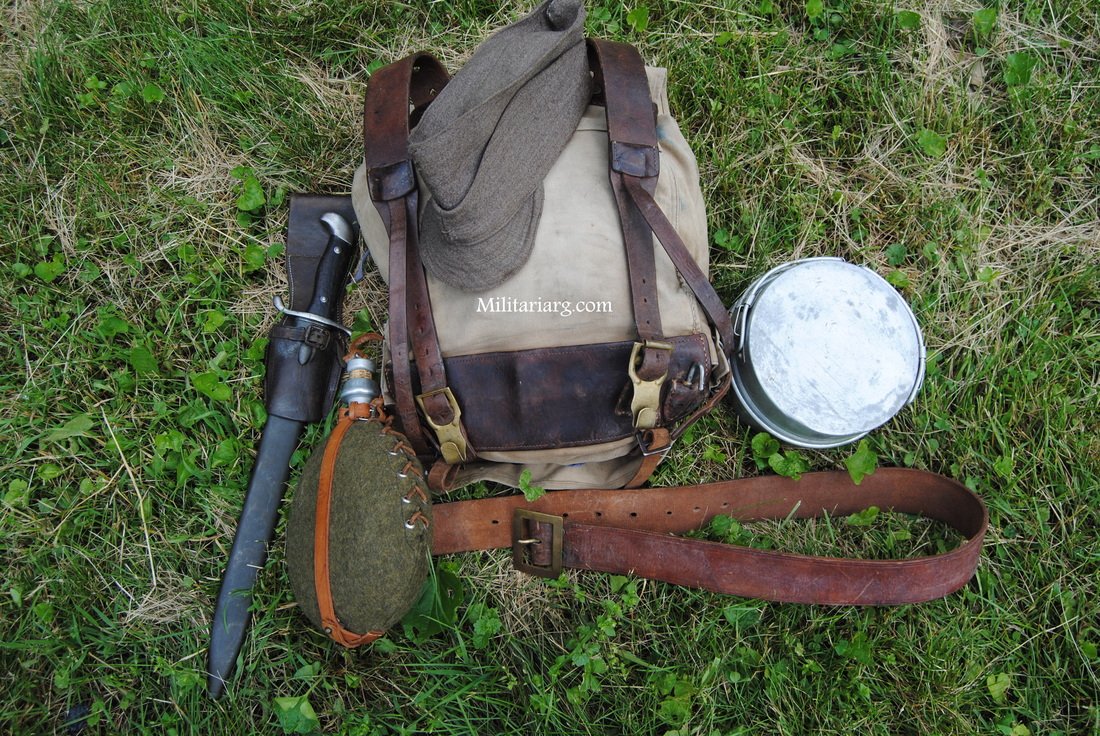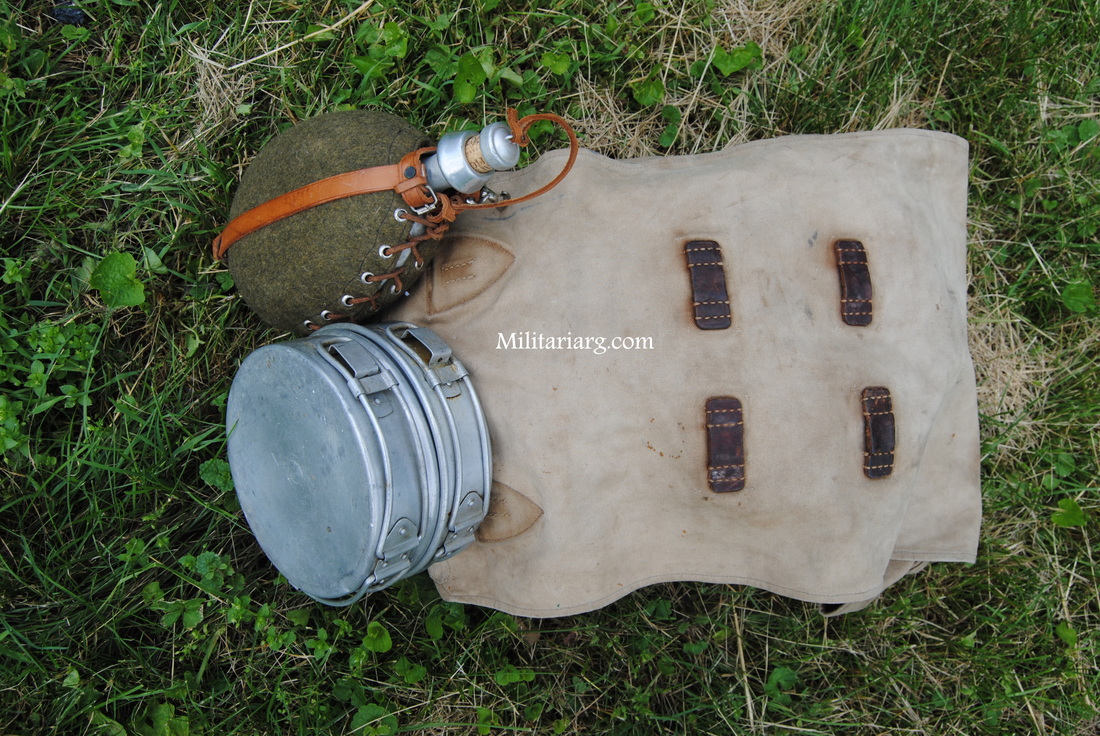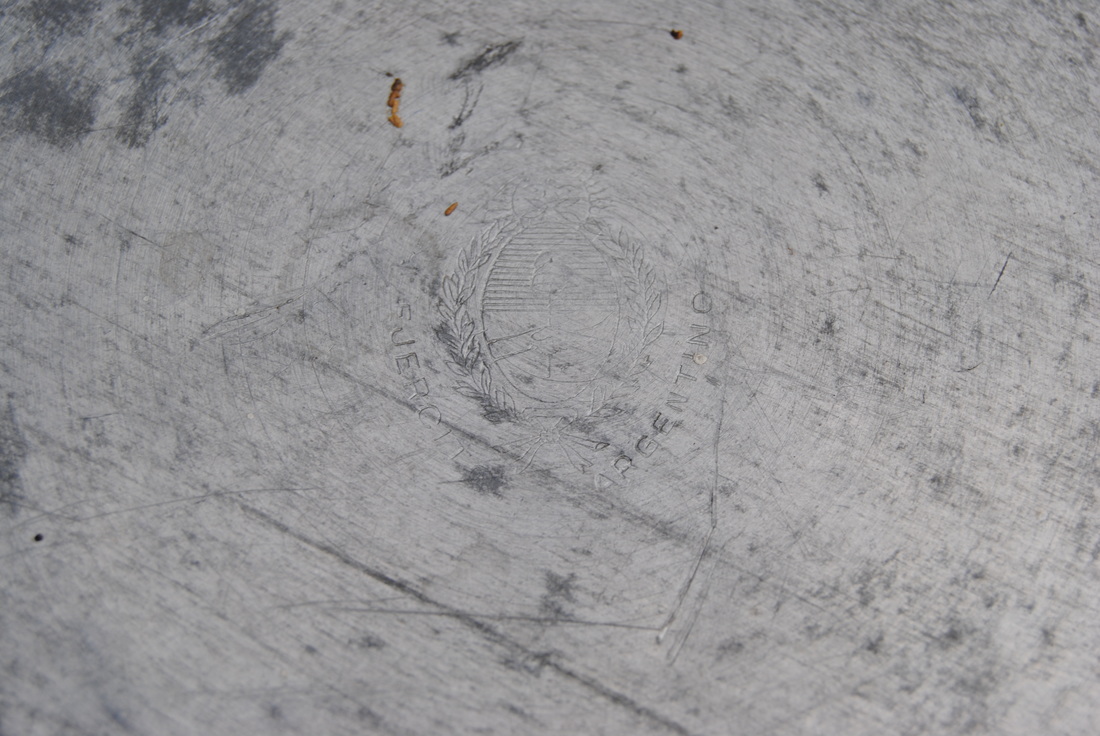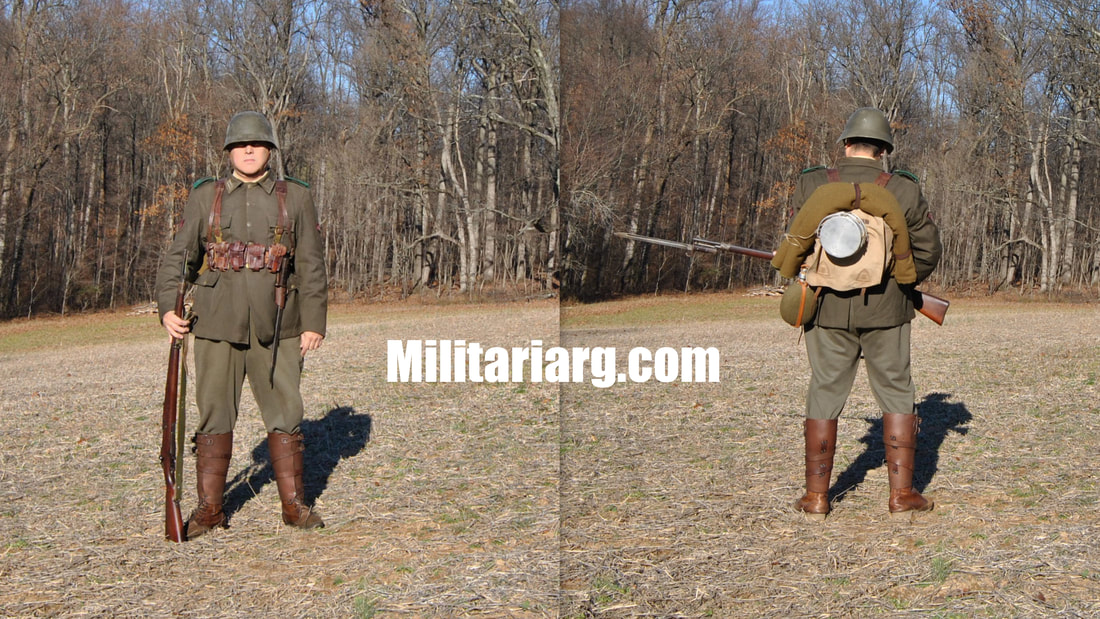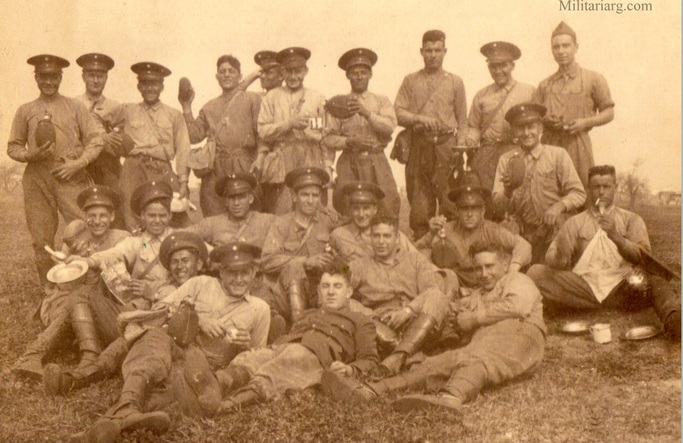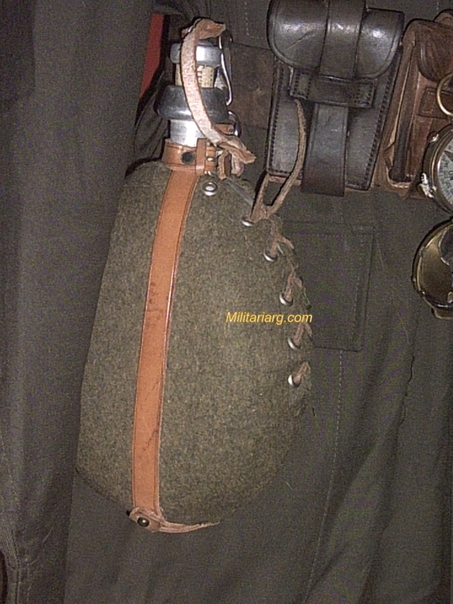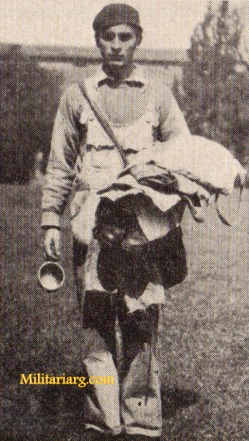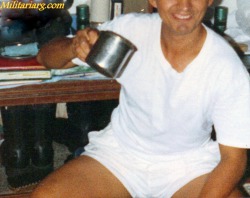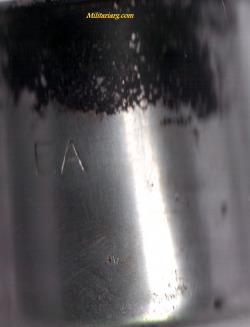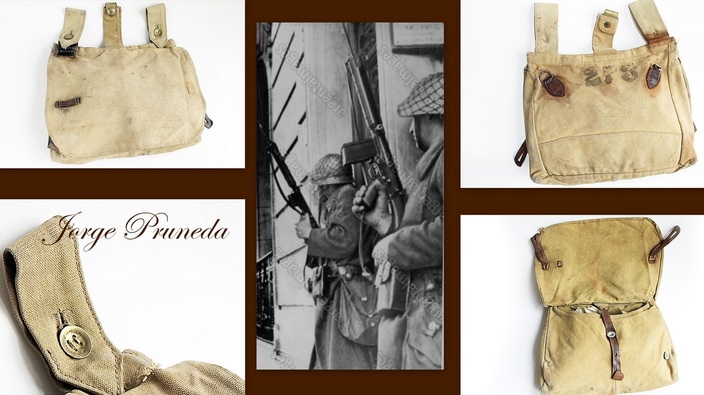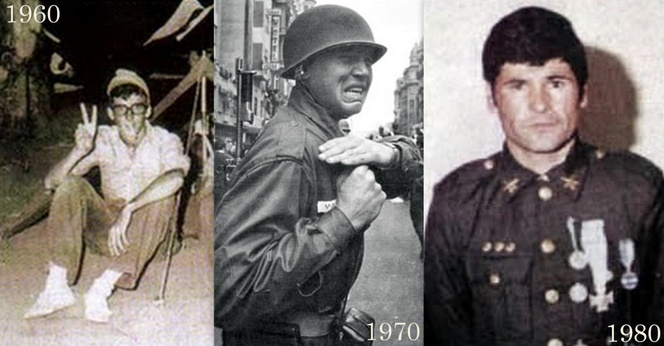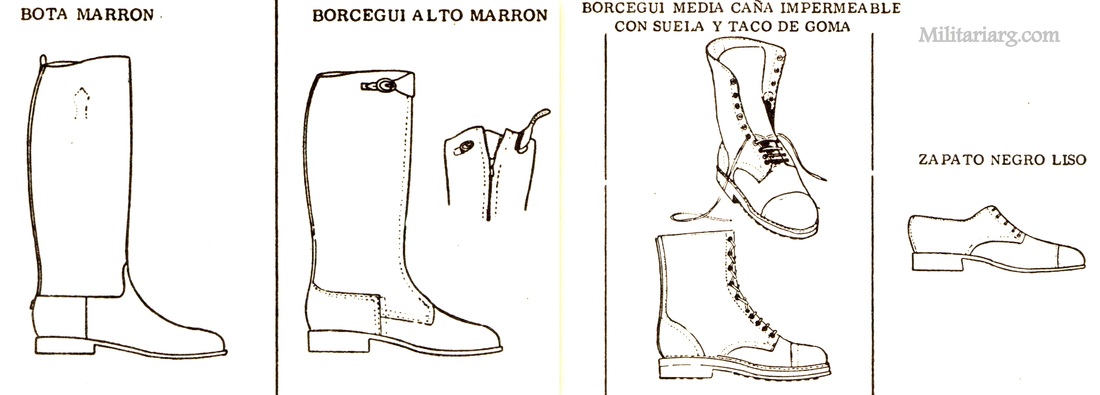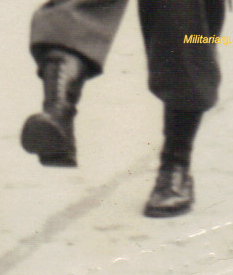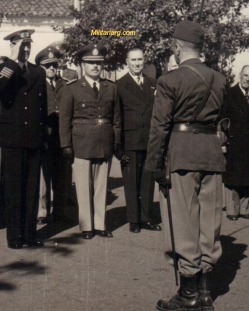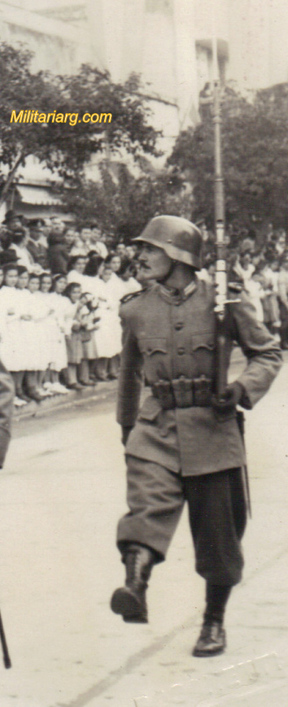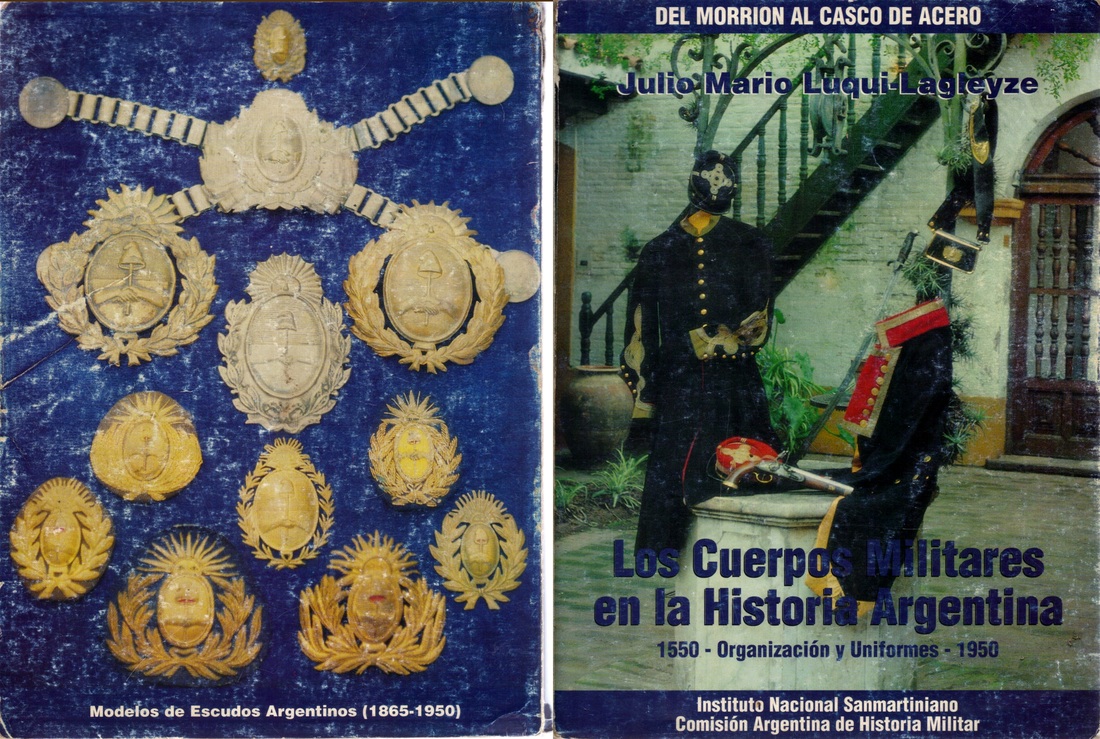Dragoneant Rank and Leather Mapboards, document holder.
R.R.M. 44.
1931 Model Uniform and 1938 reforms:
Linemann e-tool shovel.
It is actually a Danish invention. Invented by the Danish army officer Mads Johan Buch Linnemann, (1830-89) He graduated as officer on October 26. 1849, and he fought in the 1864 war, were he fought on Als as a company
commander. At the front he invented a spade, capable of a lot of things. It could be used as a saw, a frying pan, knife and finally as an entrenching tool. He was promoted to captain in 1867, and in 1869 his invention was patented, and
the spade (a lot more simplified) was introduced in the Danish army (1870). But only 256 entrenching tools pr. Battalion = Every third man received one. He travelled in 1871 to Vienna where he began manufacturing a Austrian version. The Russians ordered 60.000 pieces and payed him 30.000 Rubles. The Rumanians used it in the 1877-78 war, with good feedback.The Danish army raised the number of entrenching tools pr. Battalion to 360
in 1879. It was used in WWI and WWII and in other small wars on the continent aswell as in the European colonies. Some soldiers loved it, and others hated it, but it remained a commercial success.
Source: http://m55q.blogspot.com/2010/04/linnemann-entrenching-tool-den.html
commander. At the front he invented a spade, capable of a lot of things. It could be used as a saw, a frying pan, knife and finally as an entrenching tool. He was promoted to captain in 1867, and in 1869 his invention was patented, and
the spade (a lot more simplified) was introduced in the Danish army (1870). But only 256 entrenching tools pr. Battalion = Every third man received one. He travelled in 1871 to Vienna where he began manufacturing a Austrian version. The Russians ordered 60.000 pieces and payed him 30.000 Rubles. The Rumanians used it in the 1877-78 war, with good feedback.The Danish army raised the number of entrenching tools pr. Battalion to 360
in 1879. It was used in WWI and WWII and in other small wars on the continent aswell as in the European colonies. Some soldiers loved it, and others hated it, but it remained a commercial success.
Source: http://m55q.blogspot.com/2010/04/linnemann-entrenching-tool-den.html
1937. Caras y Caretas.
Caras y Caretas 18/04/1936.
1940s
Above is a group of NCOs pre-1946. The superior NCOs are in the front with sabres. The sabre is similar to the one used by officers. Their hat has a shield and they used a bandolier belt strap. The rest of the group consists of subordinate NCOs that do not carry the sabre or hat shield. They just have a cockade and regiment number in golden colored metal.
Interesting comparison between 2 uniform colors from the mid-1940s. These show an infantry uniform in olive green and another in khaki. Possibly the olive color in the photo is for NCO and the khaki is for soldier or NCO fatigue combat. Among the soldiers exists a hierarchy called "dragoneante" (first class). There was also a soldier for administrative duties whose denomination was "furriel". In 1923 the khaki uniform had been replaced with the olive green. The khaki may have remained in the fatigue or instruction uniforms.
Left: Argentine Olive Green Breeches; Right Khaki color.
1946 Pattern, Service Uniform: General, Colonel and Superior Officers. Captain and Junior Officers. Superior non-Commissiones Officers. Junior Non-Commissiones Officers and Troops. R.U.1946.
R.V - 170 -1.
Model Uniform 1947 (Decree # 6315, August 13 -1946): (Gral Juan Peron).
On the right, Colonel Peron is dressed in an olive green uniform. The shoulder boards are covered in cloth. He has a shoulder strap in the Sam Browne Belt type. The white shirt and black tie represent a uniform for outings or ceremonies. It bears an insignia with the specialty of the mountain and collar tab from the infantry. On the left is a general of division. According to Argentine historian Julio Luqui-Lagleyze, the pentagonal collar tabs and red band on the visor hat were used until 1955.
Motorized Regiment Buenos Aires in summer tunics.
Social Uniforms. RU.1946
Captain José Albino Irigoyen.
The jacket is an authentic relic, made by the old Casa Muñoz in 1944 for the Argentine Army. The emblem of the jacket belongs to the D.G.A, Direccion General de Arsenales. Note the belt and straps of the Sambrowne type.
Officers Belt (Sambrowne Type)
Sastrería Muñoz and Sastrería Militar:
Cape Coat, Capa Mantellina and Rain Coat, Capota:
Left and Center: Cape Pearl Grey Color. Right Olive Green Rain Coat.
Circa 1929. Esclavina. Mountain Troops.
Left: Olive green gabardine coat (Capote), for officers. Olive green waterproof coat for officers. Right: Coats for Non-Commisioned Officers, superior and juniors. Photos: R.U: 1946
This soldier made a great contribution to the study of militaria by posing for a series of personal photos with jacket and coverall. The youth from cities differed greatly from the farmers. One common occurance was the maturity of country boys, who were born in their own homes and registered by their parents much later, even years later.
1950s
Two Buckles High Boots. Photo from 1953.
NCO's of the motorized infantry in 1954, in the middle are superior NCOs. They have olive green shirts and ties and an open jacket with straps, although for some ceremonies they used white shirts with black ties.
The insignia is on the lapel. The rest are NCO subordinates ranking sargeant and below. All NCO have collar tabs.
The insignia is on the lapel. The rest are NCO subordinates ranking sargeant and below. All NCO have collar tabs.
Argentine Army Dress Suspenders, WWII era.
1931 -1947 Shirts
German type M32 khaki fatigue shirt and german type entrenching tool shovel.
Military accessories, leather goods, gloves, footwear/Calzado - Marroquinería Militar, etc
Standard leather leggings "Stowasser pattern", Original Argentine Army 1940s. They were used with short boots to protect the shins and lower legs.
Thornicroft Amazon Tractors Drivers. Drivers are getting instructions before beginning exercises with the drivers. Photo from the archives of LIFE Magazine.
Two argentine mauser rifle leather ammunition ammo pouches.
Mauser 1909 Ammo Pouch and Compass Pouch.
Argentine Mauser bayonet frog 'Tahali'.
Malvinas Era. FN FAL Olive Green Leather Bayonet Tahali (2nd Type w/belt). Note the small strip that goes over the handle.
Type ersatz tornister backpack, blanket and mess kit.
The Mess Kit was basically based on the German model Eßgeschirrs M1908. The blanket rolled up with a waterproof tent and curled around the backpack. The tornister (backpack) is a German copy.
A backpack with mess kit. Soldiers used to hang the mess kit from their web equipment or backpack.
Argentine made Canteen, Type German M31.
Argentine canteen with cover from the 1940s type M-1910. This model is a copy of the Imperial/WWI Era German canteens. It is relatively easy to acquire German replicas due to the high interest in WWII reenactments, which in turn can be substituted for the Argentine model.
Sterling Cups. Model (?)
|
Stainless steel cup from the Argentine Army. The photo on the left shows a soldier who has received his equipment, among those is the stainless steel cup in his hand.
On the upper right is a soldier from the 1980s in a gym uniform with the same item. The cup on the lower right, marked EA (Ejercito Argentino), is a battlefield relic from the Malvinas War acquired in England. |
Army Bread Bag. Jorge Pruneda Collection
Left: Fatigue cap, light khaki shirt and fatigue trousers. Center: M67 Combat Uniform with textil name tag. Right: Malvinas Hero Poltronieri with Medals: 1967 Pattern Dress Jacket with infantry badge and regimental numbers.
Among the brands that provided combat boots to the Argentine Army are Gomicuer with Vibram sole, Marasco & Speziale, Montagne, etc. These last two specialized in mountain and ski boots.
|
Interesting photo of a soldier in 1949 with "borceguies" or combat boots (US M43 Argentine version double bucklets, adopted by the French, Belgian and other many armies in the post-war period. The standard combat footwear of the Argentine Military were high riding boots, or for the infantry short boots with leather leggings; The paratroopers used medium boots type WW2 US Airborne with very particular leather anklets protection.
|
On the left is an Army officer saluting another visitor. He has a "birrete" garrison cap with a light blue and white cockade, sand colored shirt, olive green jacket, wide sand grey pants, and "borceguies" combat boots.
|
